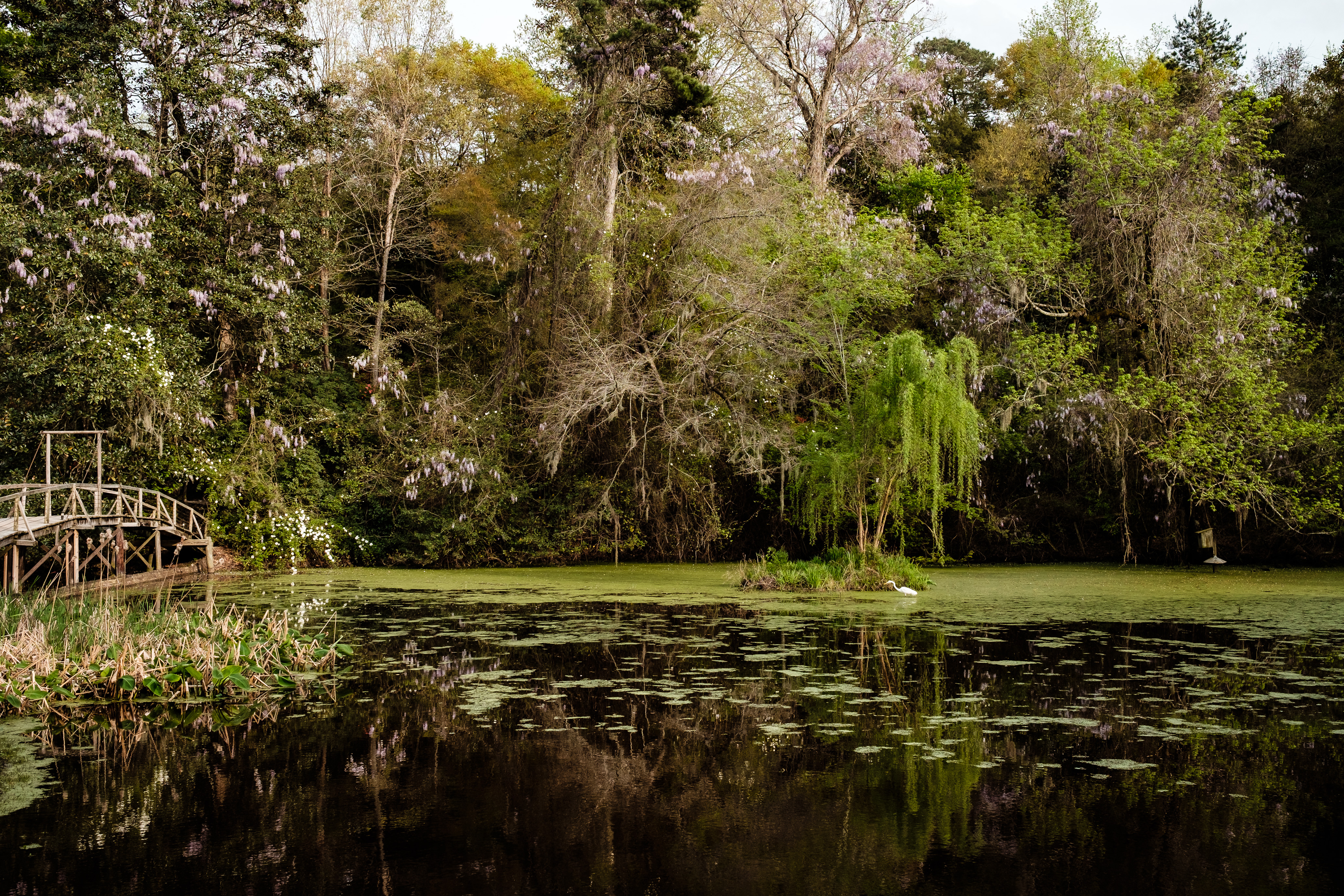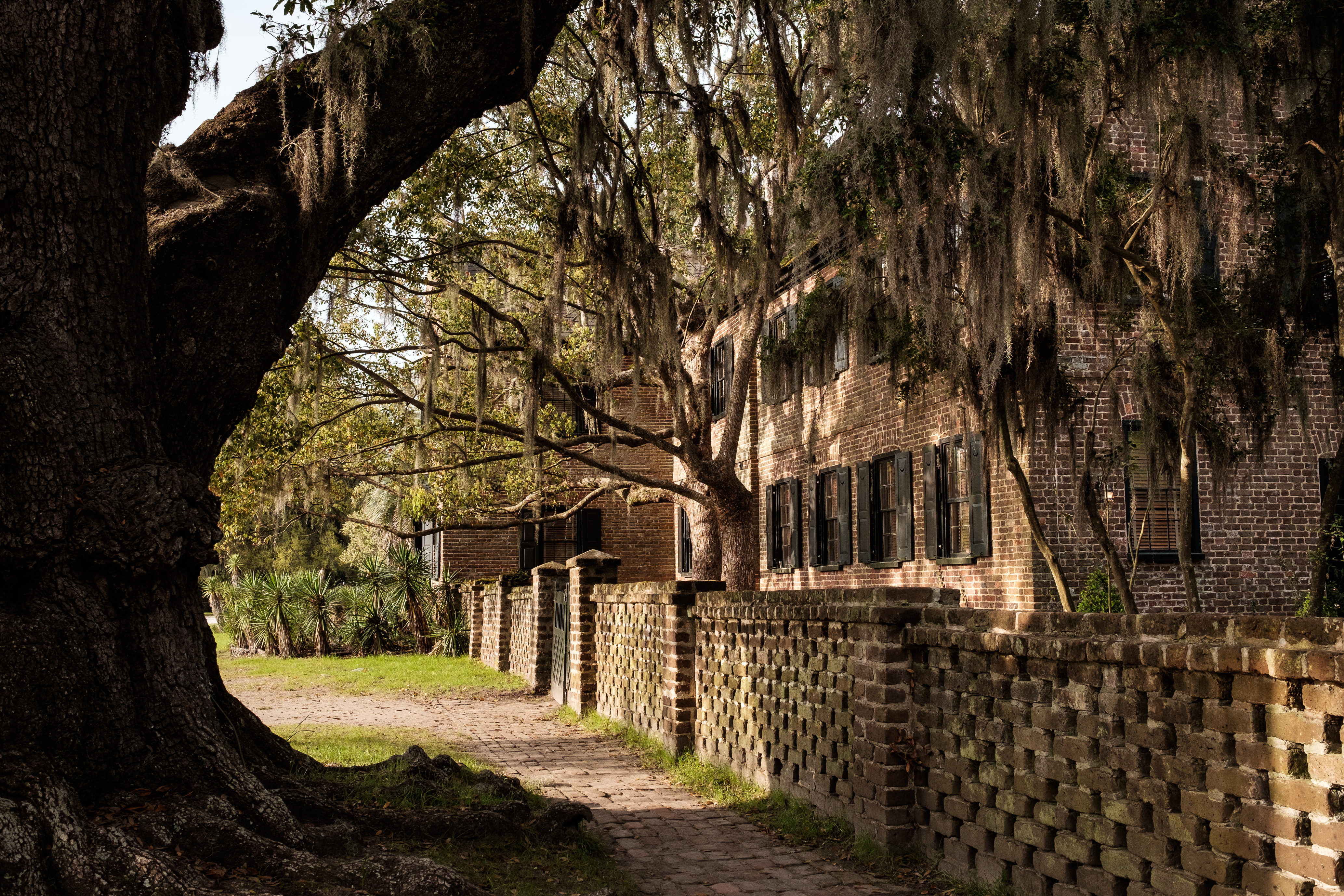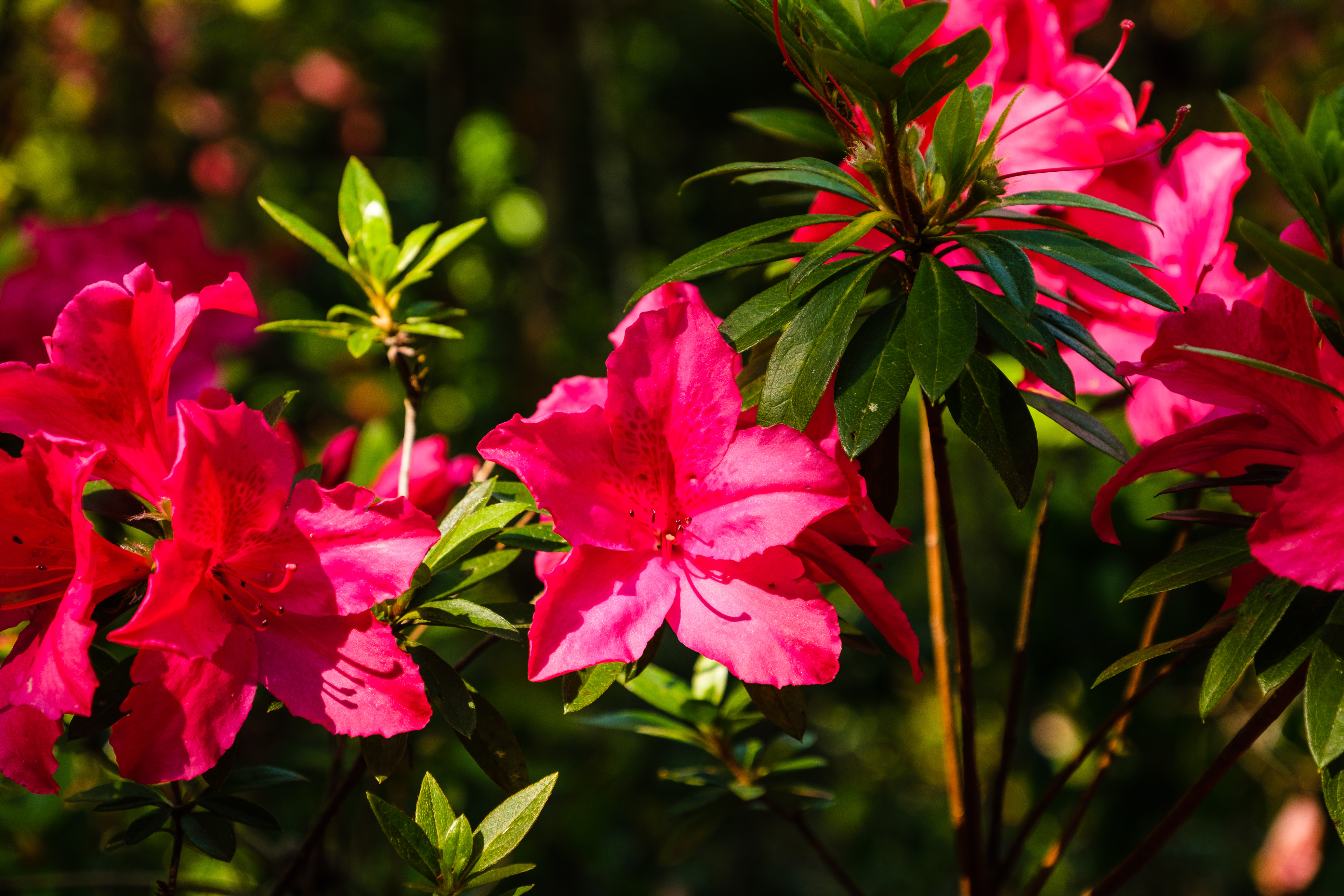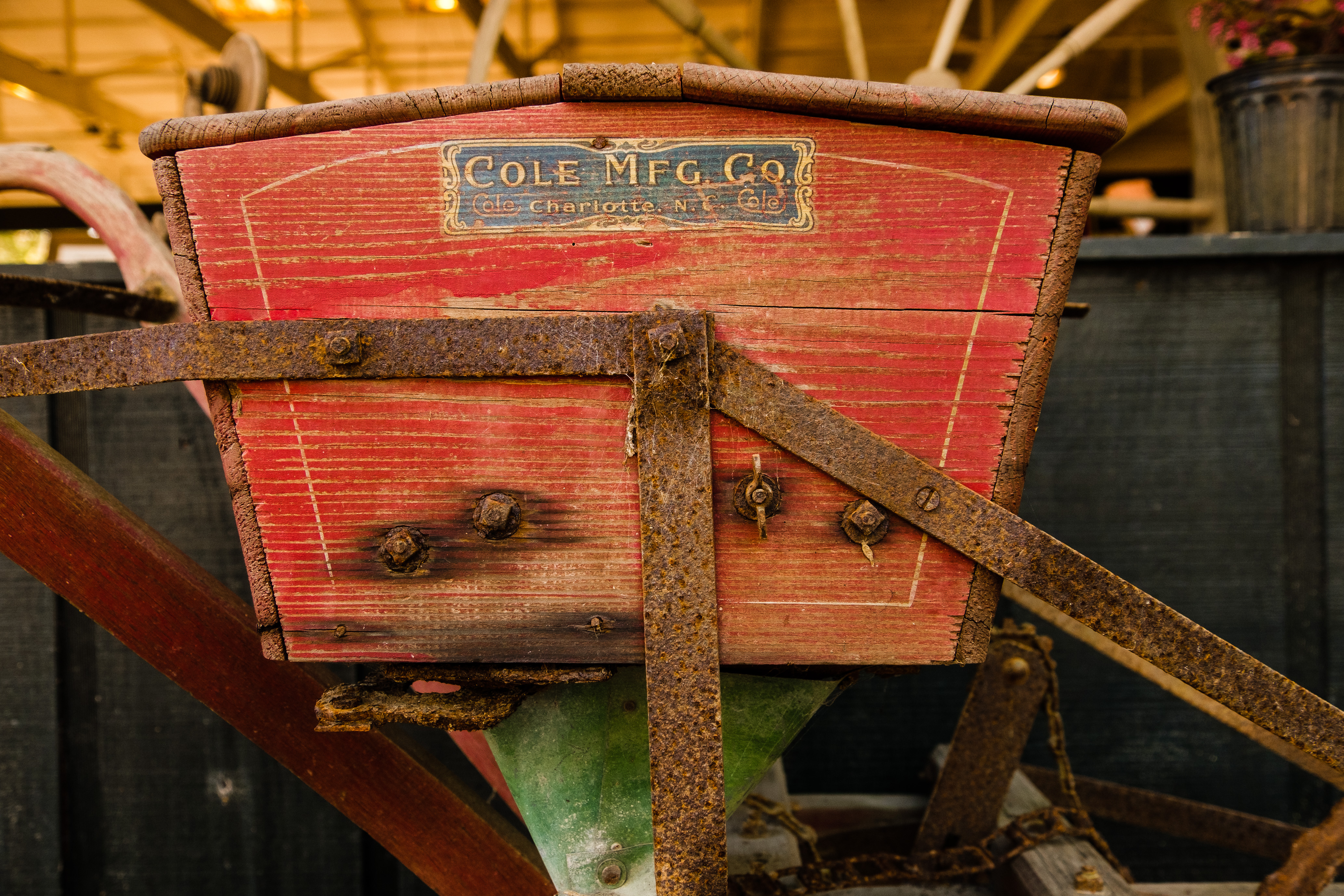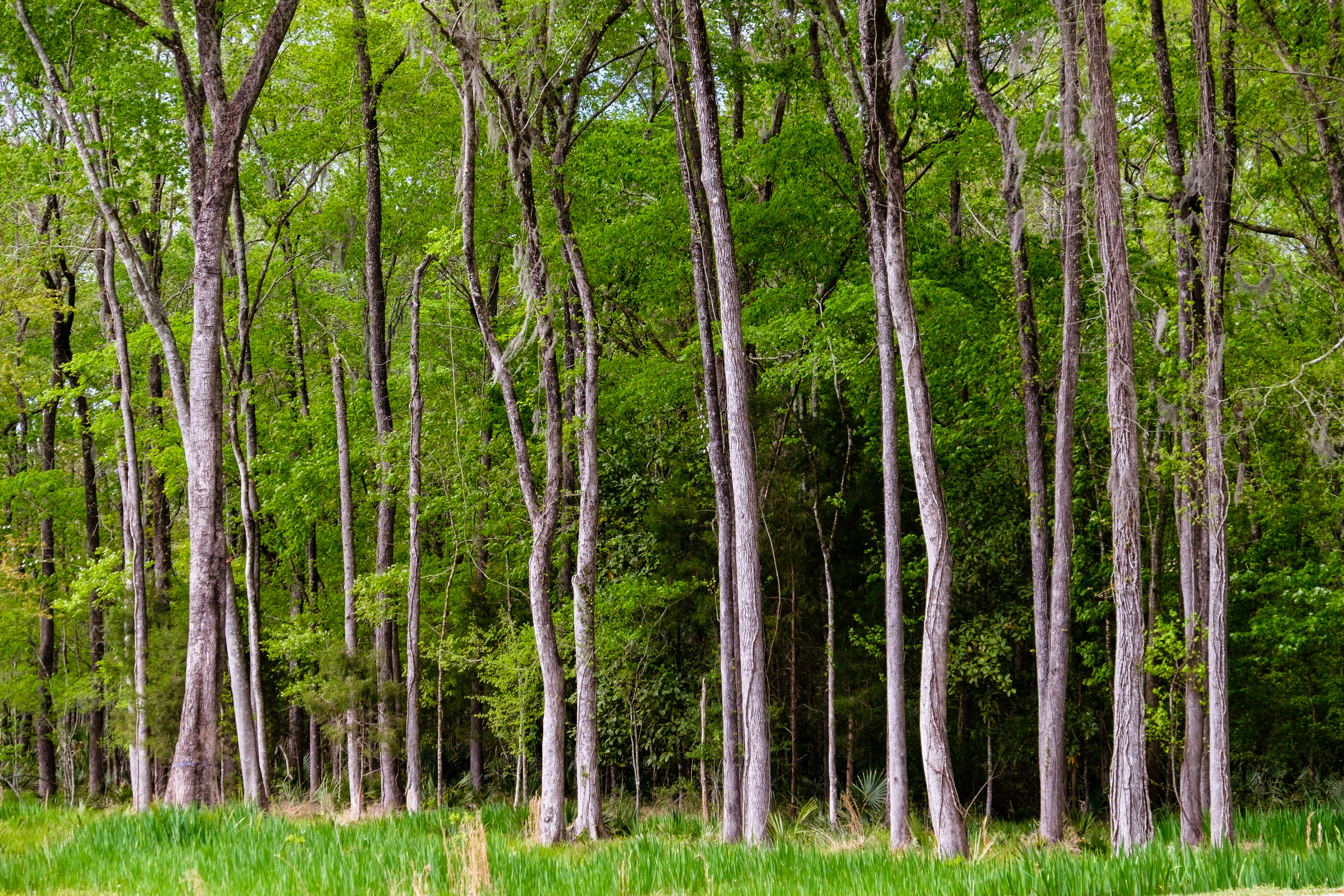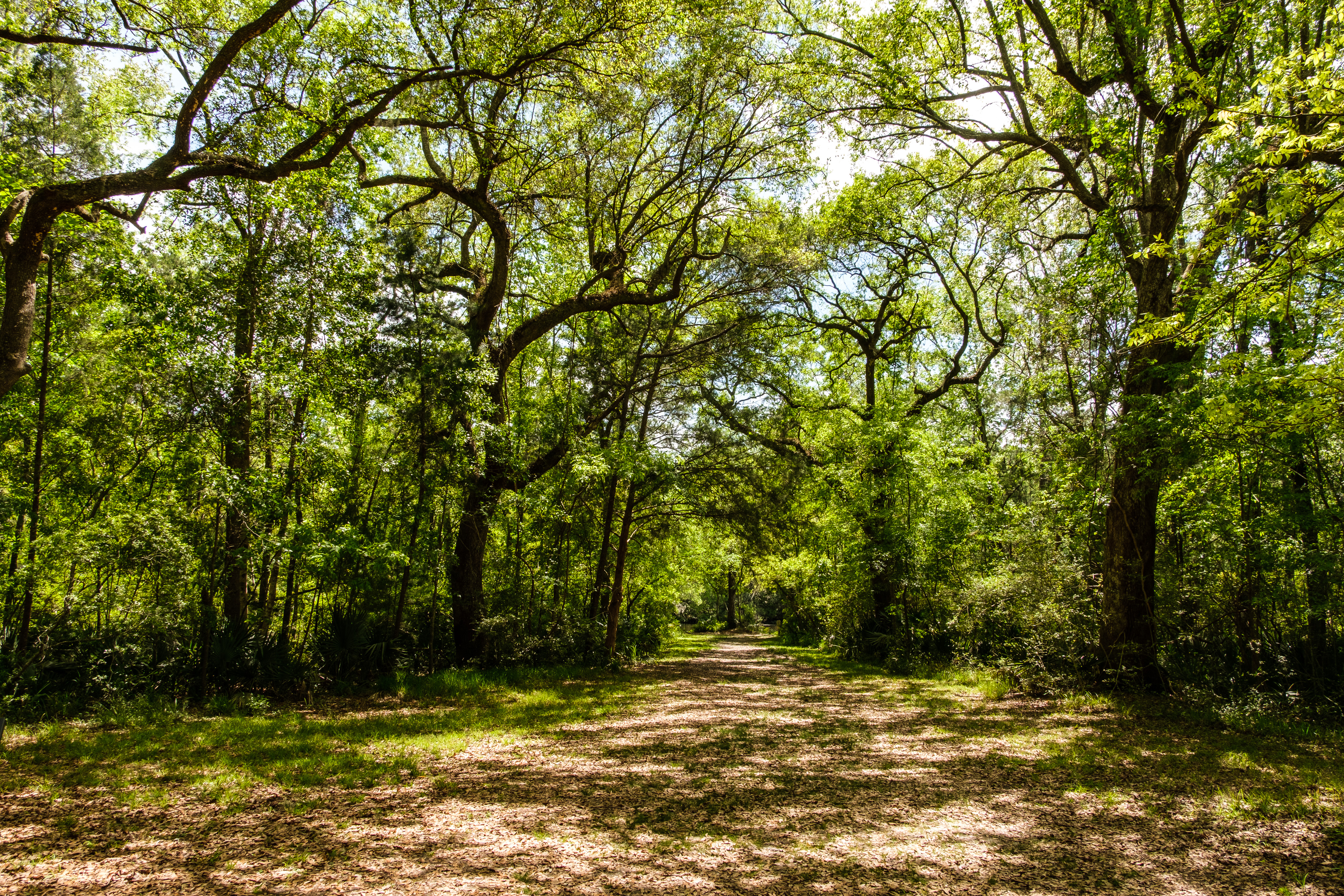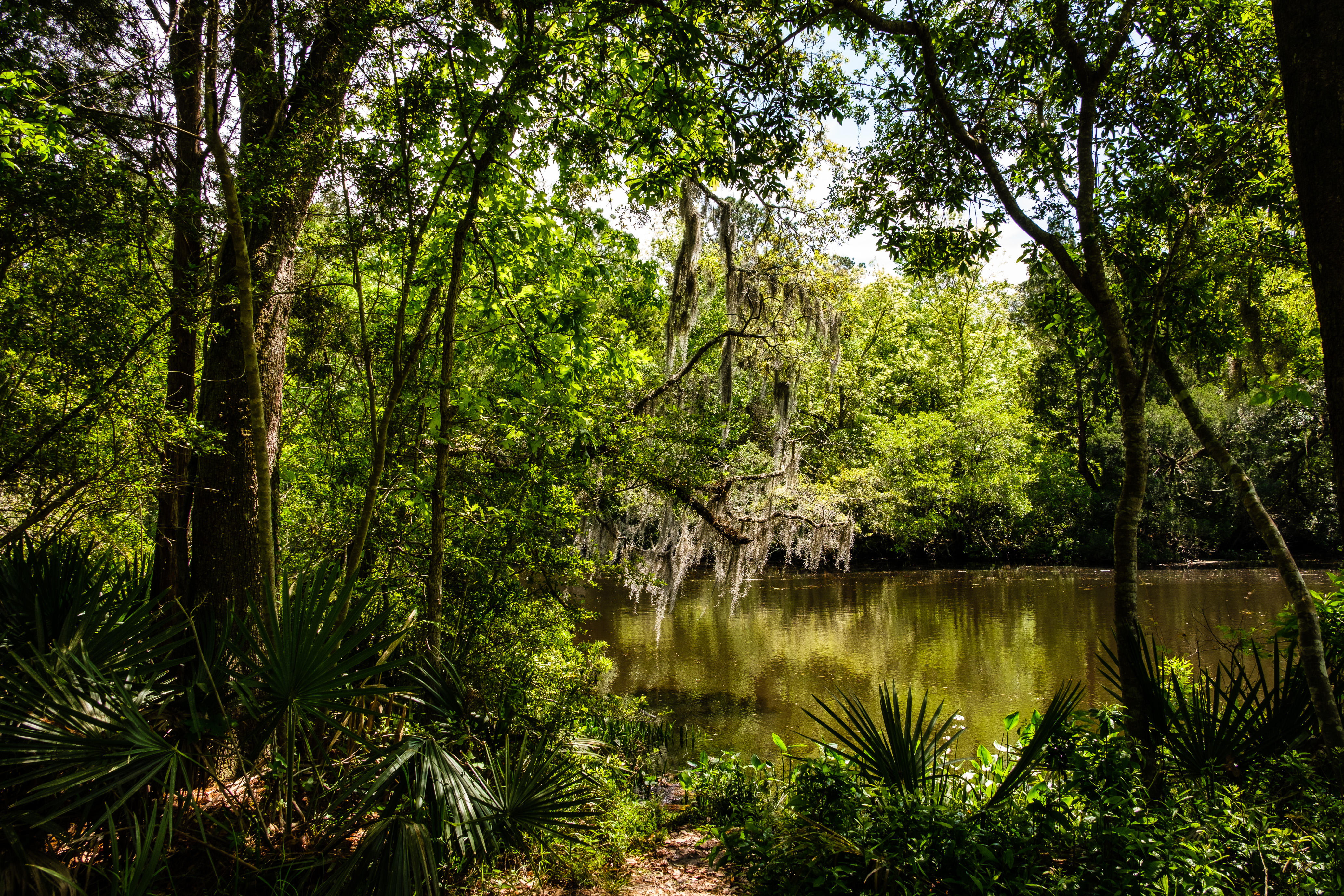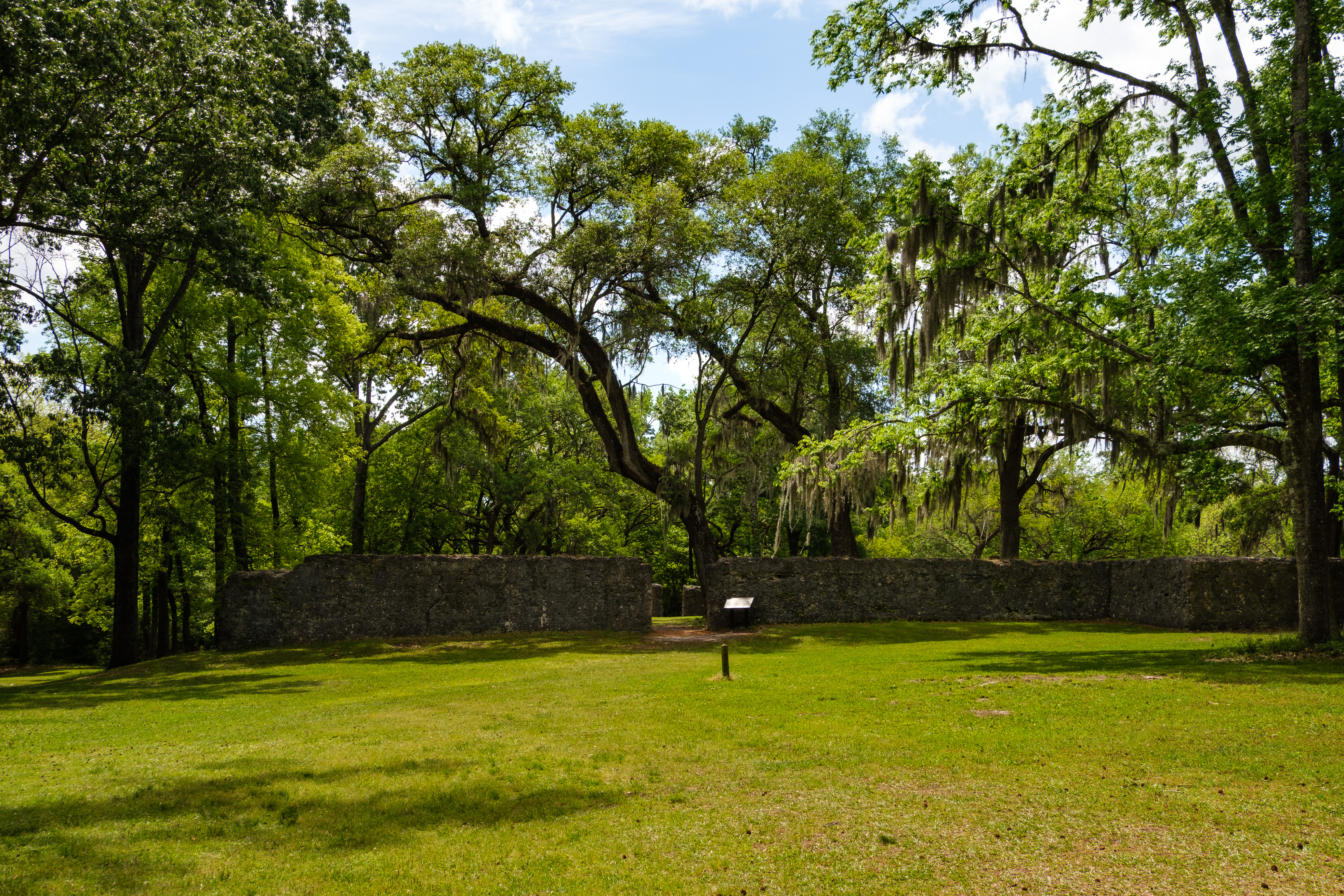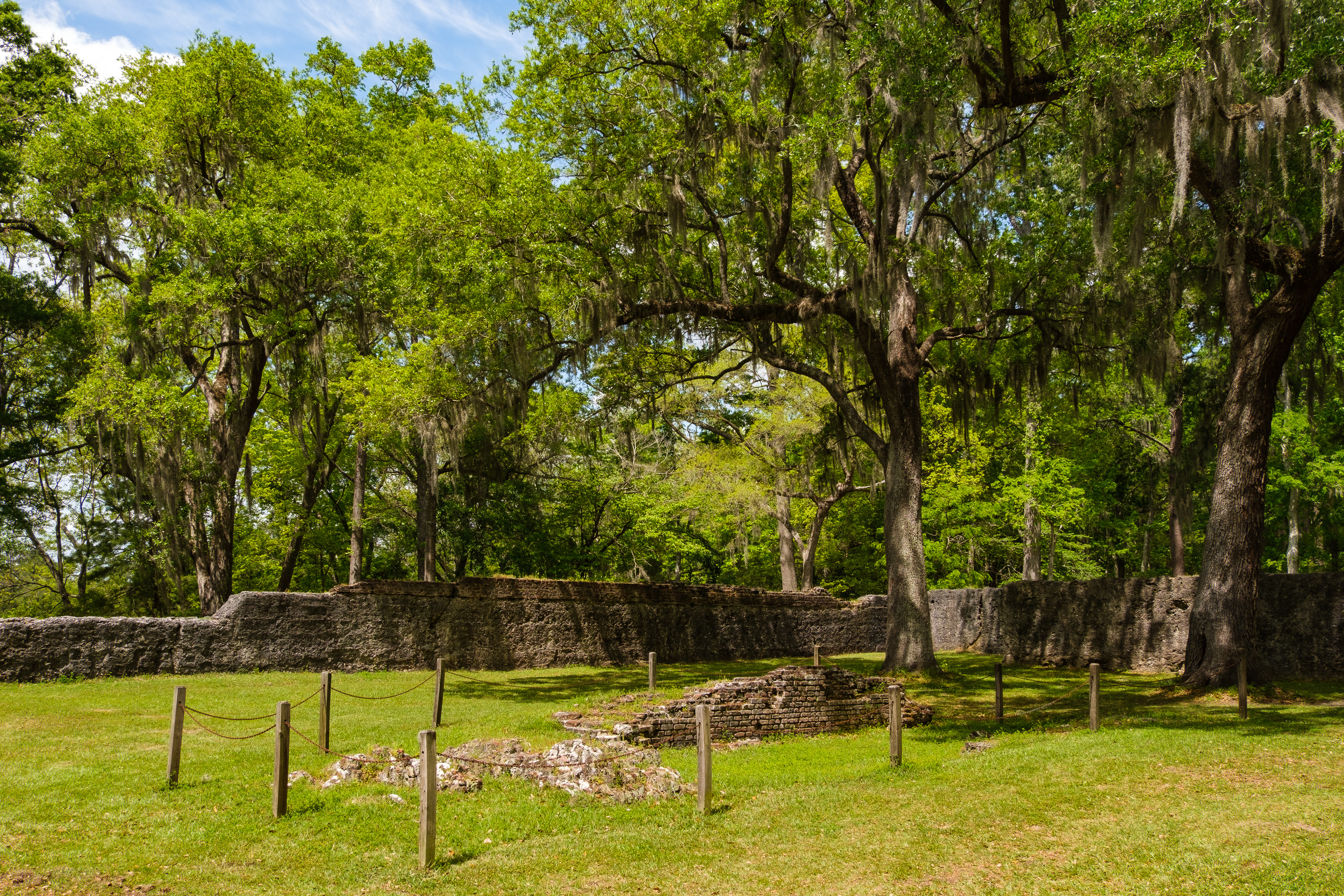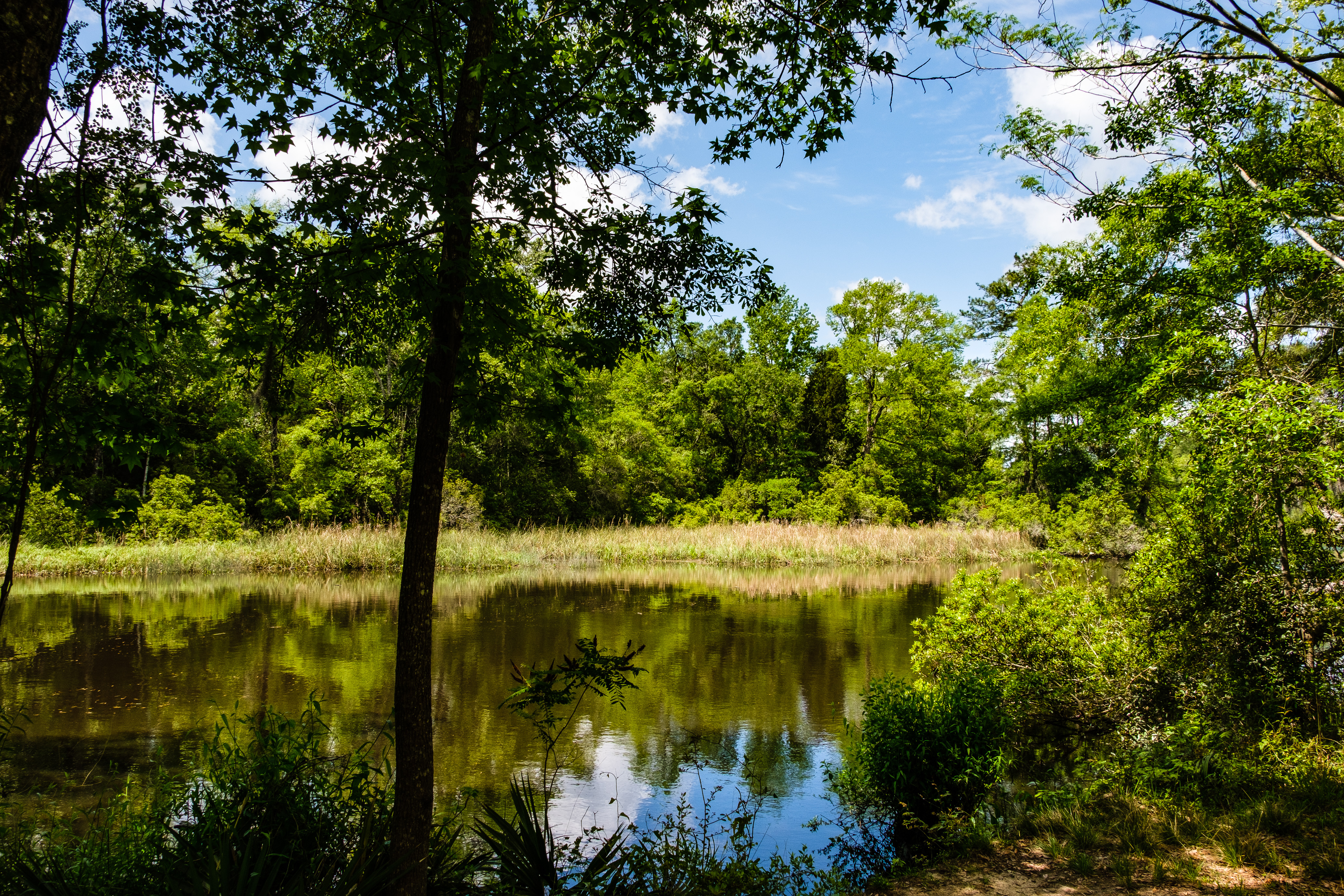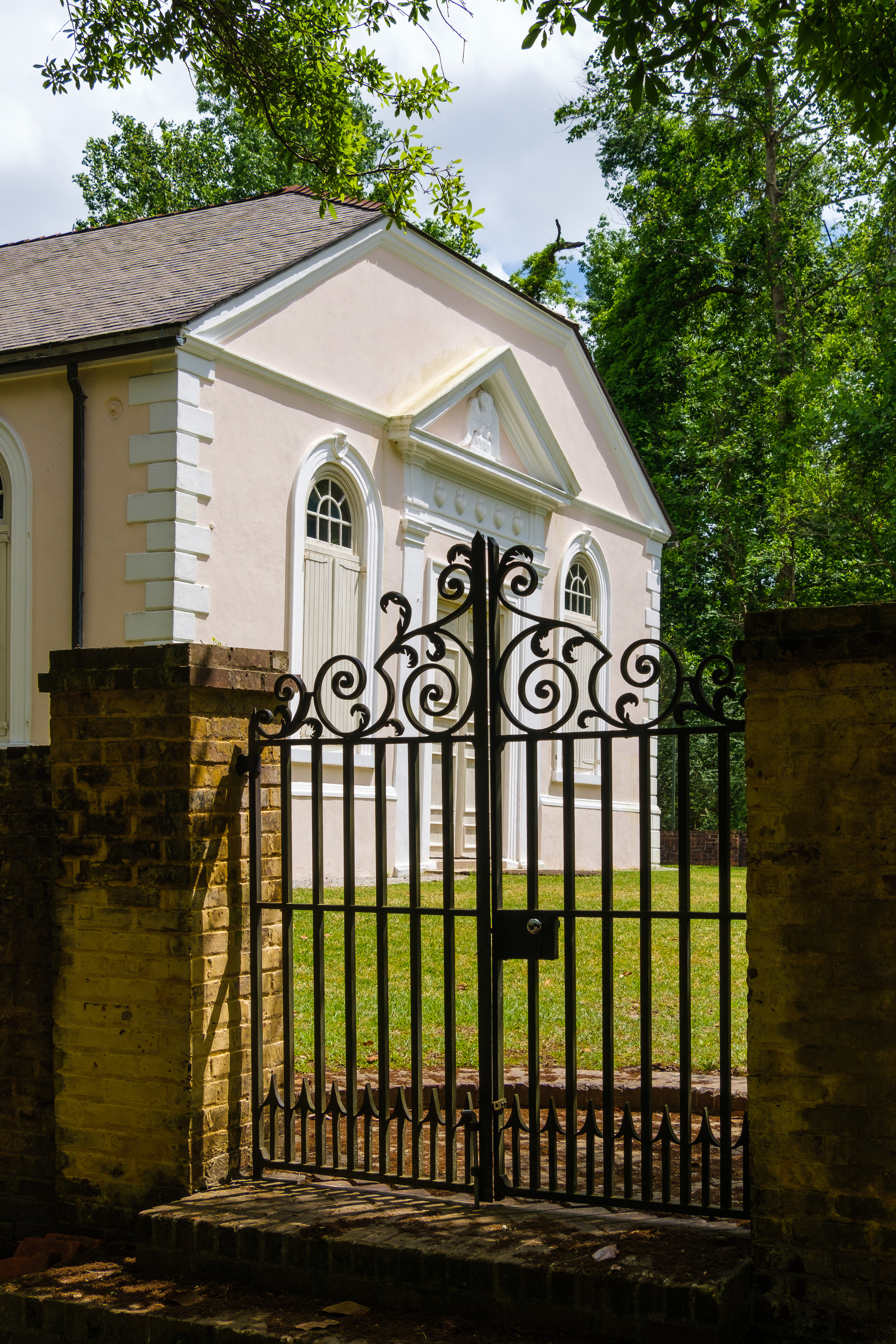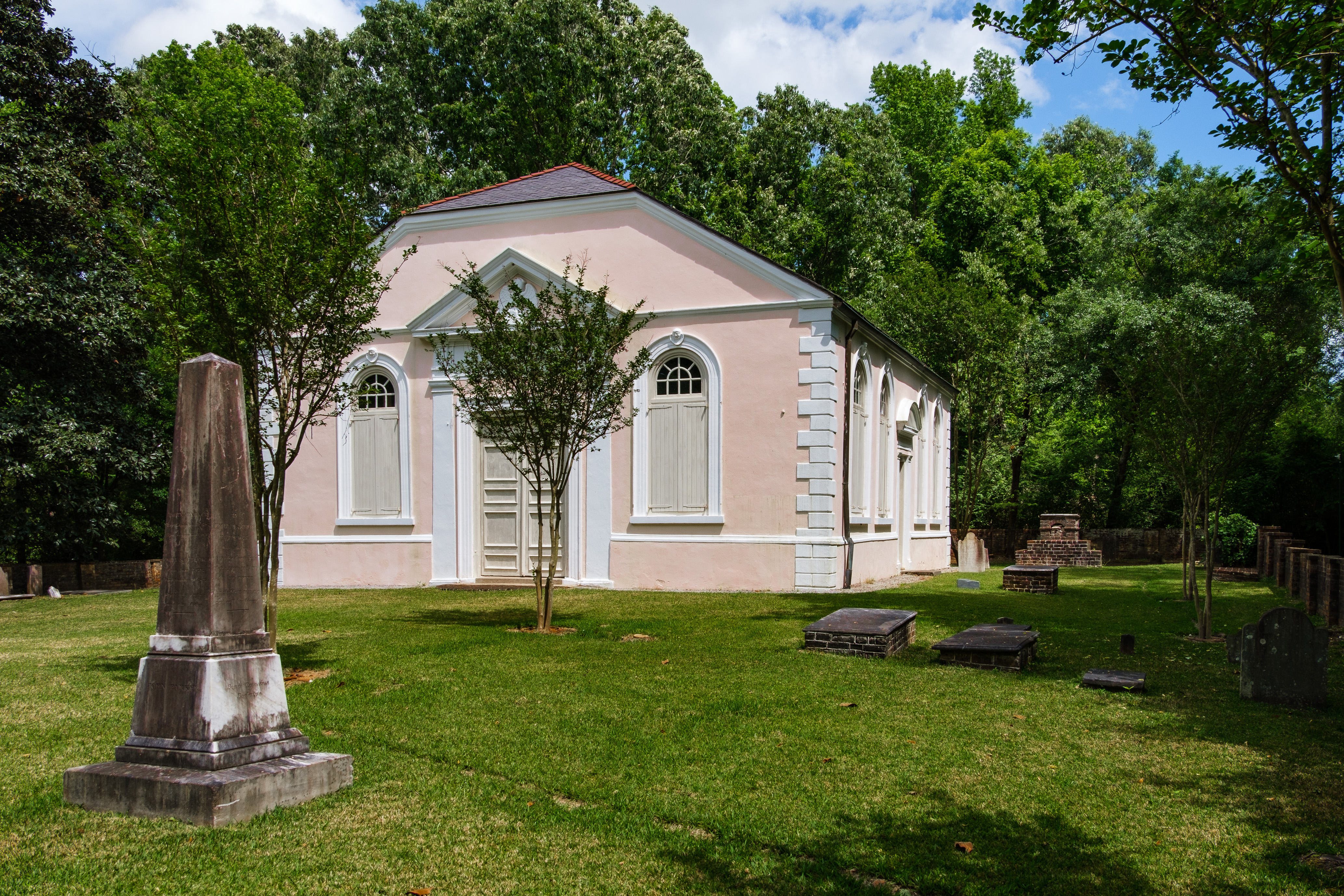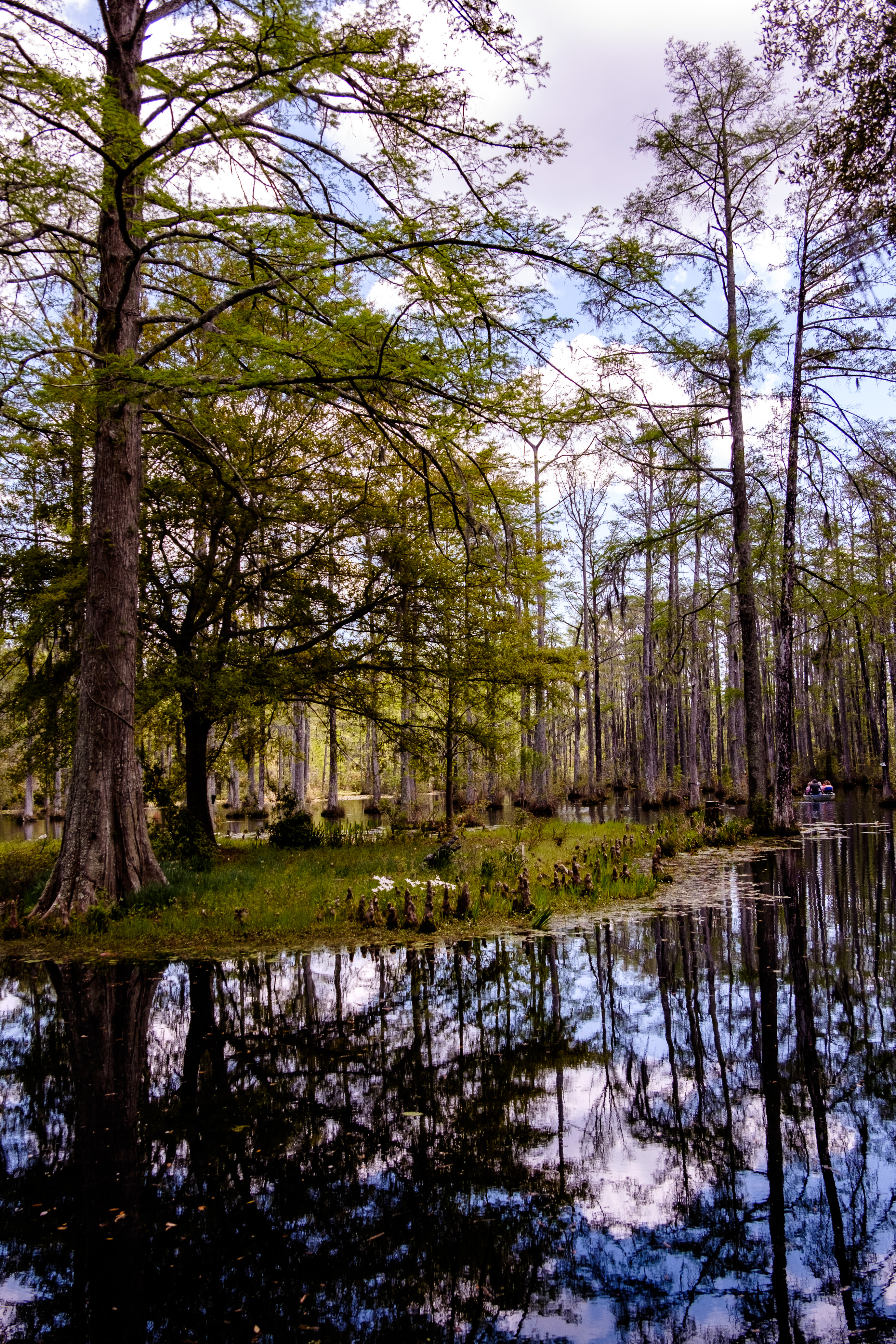The Lowcountry Plantations
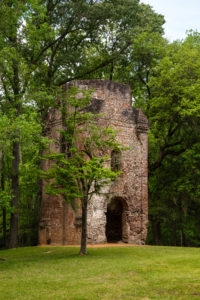
St. George’s Church ruins
A few miles northwest of central Charleston is the start of the Ashley River Road (Route 61). In this post, that’s where we are headed after we cross over to the other side of the river on the Ashley River Bridge from historic Charleston. We will also visit a blackwater swamp in Berkeley County near the Cooper River.
It’s on the Ashley River Road that three important plantations (as they exist today) can be found: Magnolia, Drayton Hall and Middleton Place. They are the most well known of the surviving plantations around Charleston along with Boone Hall in nearby Mount Pleasant east of the city. I am going to feature two of them – Drayton Hall and Middleton Place – in this set of photographs.
Only on Route 5 in Virginia – that will be a later post – when I stopped off at some of the James River plantations established in the Virginia Colony along the James River between Williamsburg and Richmond did I see plantations that came close to what is on view around Charleston.
In case you are wondering, the plantations featured in this post got through Hurricane Dorian earlier this month which as I understand it stayed off the coast.
As I wandered around the beautiful grounds of the various plantations I saw on the drive – in South Carolina and elsewhere – and marveled at the handsome plantation houses, one thing that did not enter my mind was any “Gone With the Wind” romanticism given the realities of life on the plantation for those laboring there. The economics of these wealthy plantations derived from slave labor, and life for the enslaved African Americans there was brutal and harsh. In particular, the health of plantation slaves – working in very difficult conditions (such as in the rice fields of the Ashley River Road estates) – was poor. In the 18th and 19th centuries the South Carolina Lowcountry was said to be the deadliest disease region on the North American mainland. Families were separated. Plantation life was far different from Margret Mitchell’s fictional idyllic slave world. Fortunately, as was the case when I was at Jefferson’s Monticello in Virginia (see the July post), the curators at these Lowcountry sites also seemed to be trying to tell the whole story.
For me it’s critical to see these plantations in their historical context. They are relics of a thankfully bygone era. The economics of these grand estates in the South for the most part simply collapsed after the abolition of slavery. Also, the war damage was catastrophic quite apart from the loss of an enslaved work force. Having long since ceased operations as working agricultural plantations, the grand Ashley River estates now are museums and tourist attractions.

Back to the 21st century and our visits now to the plantations. If you only had time to visit one of them along Route 61, that would be Middleton Place Plantation which will be the first grouping in the set. The main house was destroyed in the Civil War. What you will see in the set below is a surviving flanking building which originally served as guest quarters but became the Middleton family’s post bellum residence. It’s now a house museum. The Middleton Place gardens are gorgeous and not to be missed. There’s a fine restaurant there, too, which I can highly recommend.
Drayton Hall is said to be the nation’s finest example of Palladian-inspired architecture. It is the oldest preserved plantation house in the U.S. that is open to the public and the only Ashley River plantation house to survive the Civil War intact. What’s remarkable is that Drayton Hall is just as it was when it was built; there’s no no electricity, heating or plumbing. (No air conditioning either so be forewarned.) All but four plantation homes along the river were burned by Federal forces. Drayton Hall, the only preserved home surviving today, was supposedly saved by smallpox quarantine flags, although other stories exist. It is a National Trust Historic Site. It’s another fine visit, time permitting.
Magnolia Plantation and Gardens has a huge swamp garden but is my least favorite of the three main Ashley River Road plantations. It’s overly touristy with almost a theme park feel to it. Other than the entrance I am not including any photos and instead will share photos from the extraordinary swamp walk I did at Cypress Gardens in Moncks Corner (more below).
In this set we’ll make a few other stops on or near Route 61: Old Saint Andrew’s Parish Church (founded 1706 with the present building dating from 1764), the Colonial Dorchester State Historic Site near Summerville with the ruins of Fort Dorchester and St. George’s Church (1717), and Saint James parish church (built 1713-19).
Old St. Andrew’s (Episcopal) is a gem. It is said to be the oldest surviving structure that is used for worship south of Virginia and South Carolina’s only remaining colonial cruciform church. It’s been beautifully restored. When I visited the site on a weekday in April with my friend from Summerville, as luck would have it, the church sexton was there and saw us on the grounds, and he kindly unlocked the sanctuary and gave us a private tour. Timing is everything sometimes.
Finally, in this set we end up a little farther afield at the incredible Cypress Gardens swamp near Moncks Corner, in Berkeley County, about 33 miles (53 km) from Charleston. It’s a 170-acre (69 ha) preserve and gardens located not far from the Cooper River. There are 80 acres (32 ha) of blackwater bald cypress/tupelo swamp. It is unlike anything I have ever seen. It was April so there were explosions of color – blooming azaleas everywhere along the paths. The gardens were originally part of the 1750 Dean Hall rice plantation. I didn’t see any alligators on my swamp walk, in case you are wondering about that…
In the next post we will start the drive northward along the South Carolina coast. See you again then.
Click on (or tap) an image to expand it (and use the arrow to the right on an expanded image to go through the set, if preferred over scrolling down in the post).
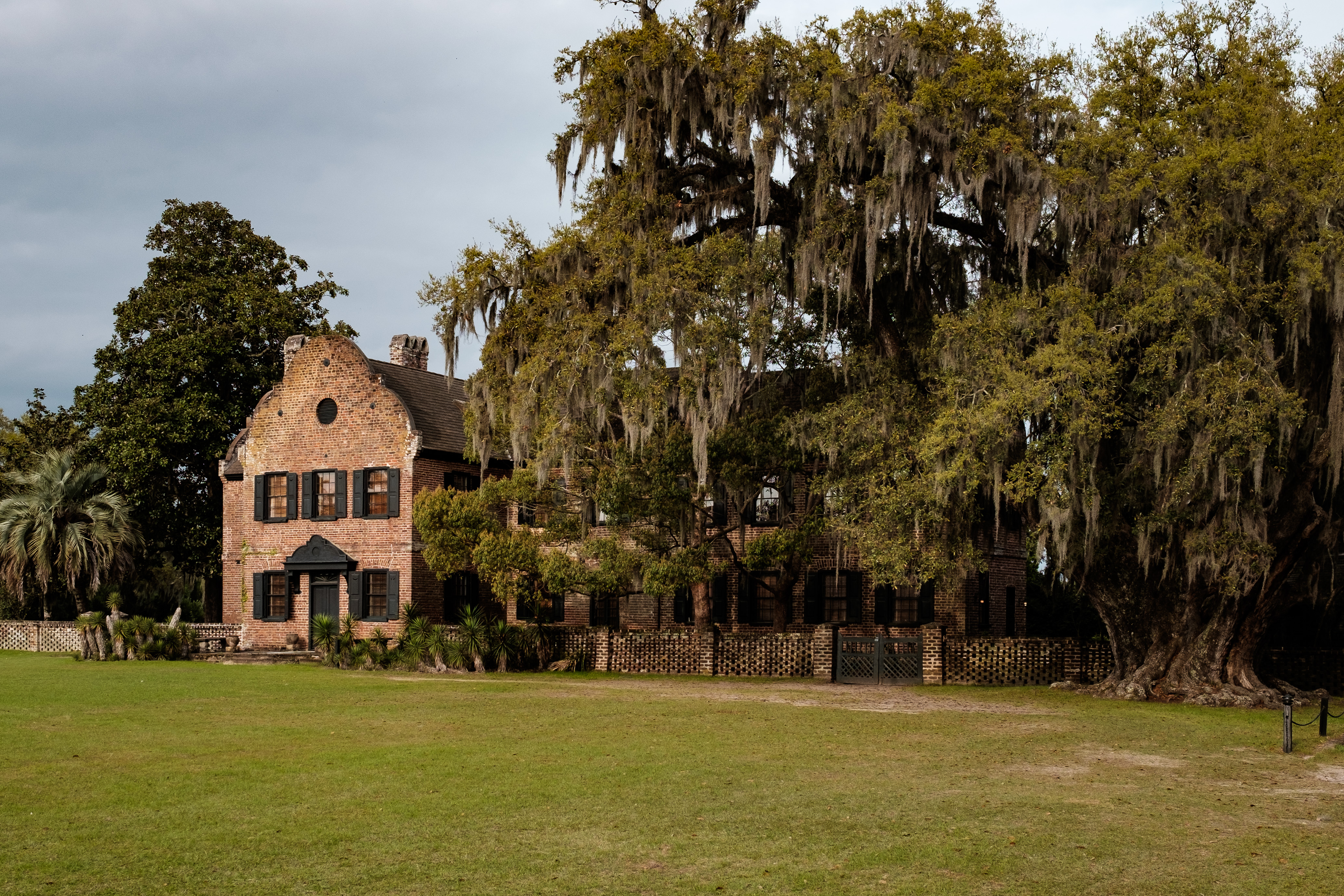
On the Ashley River Road. Middleton Place plantation in Dorchester County, northwest of Charleston, South Carolina
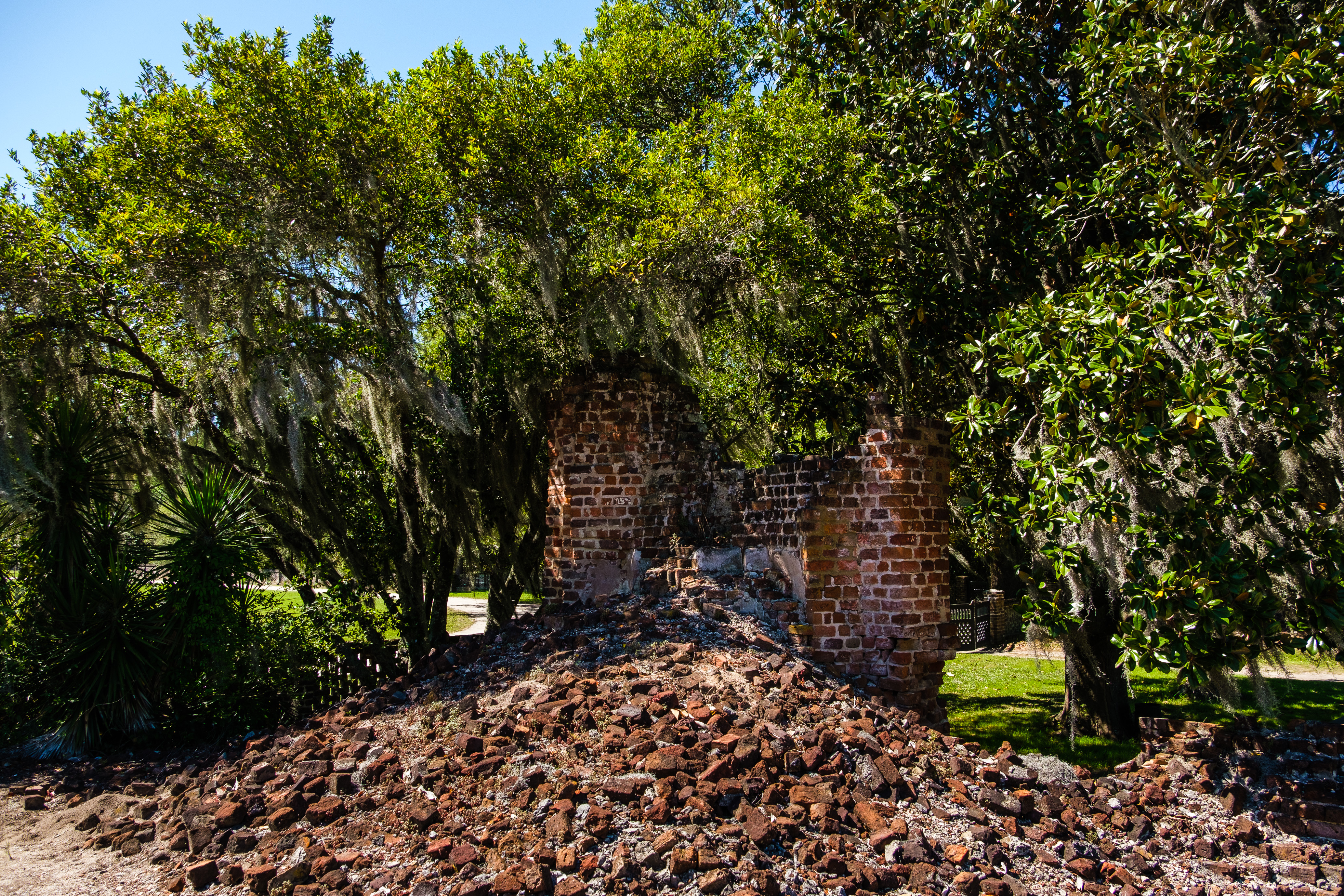
Ruins of the main house. Middleton Place plantation in Dorchester County, northwest of Charleston, South Carolina

Springhouse and chapel, Middleton Place plantation in Dorchester County, northwest of Charleston, South Carolina
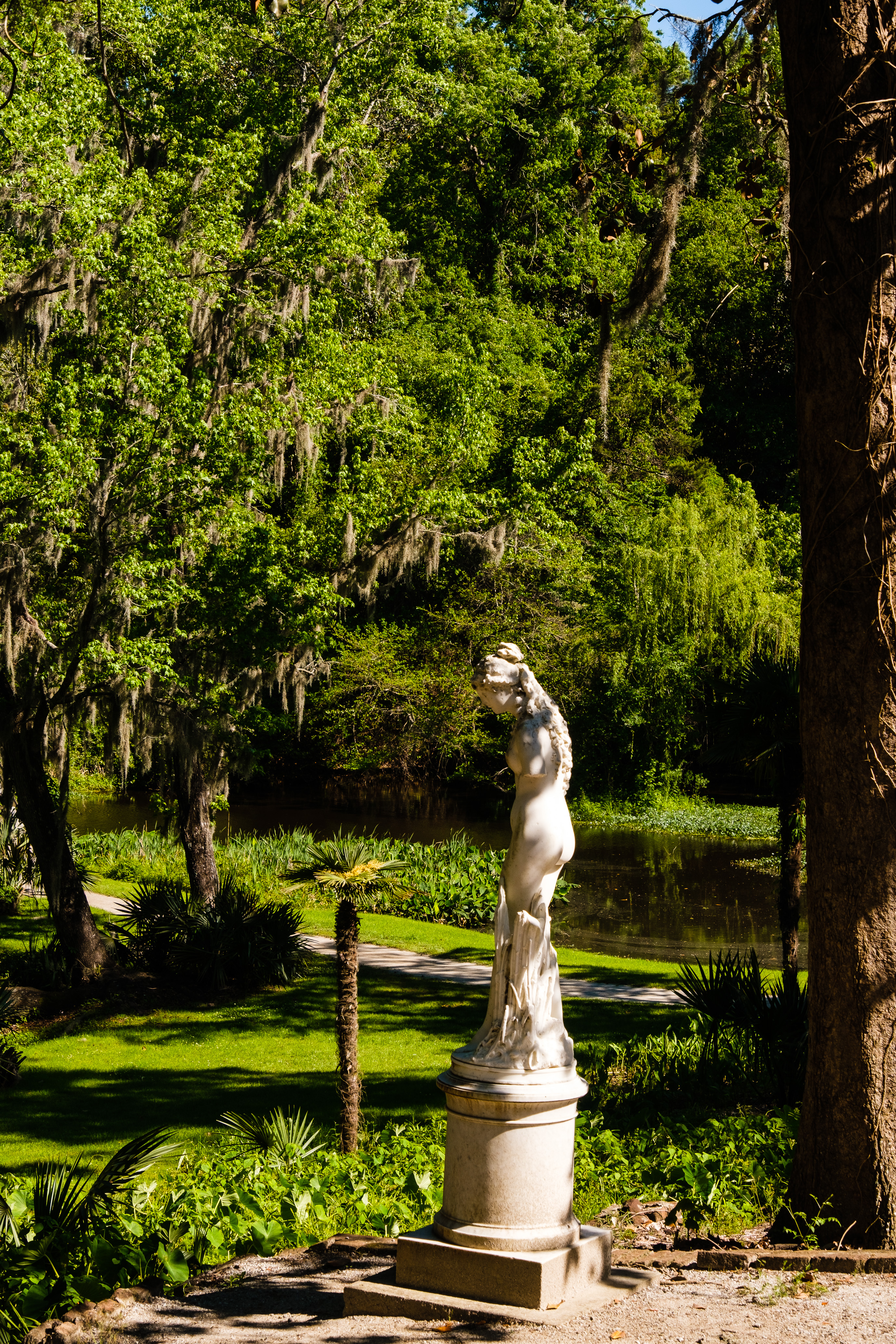
In the gardens. Middleton Place plantation in Dorchester County, northwest of Charleston, South Carolina

Another view of the Springhouse and chapel, Middleton Place plantation in Dorchester County, northwest of Charleston, South Carolina
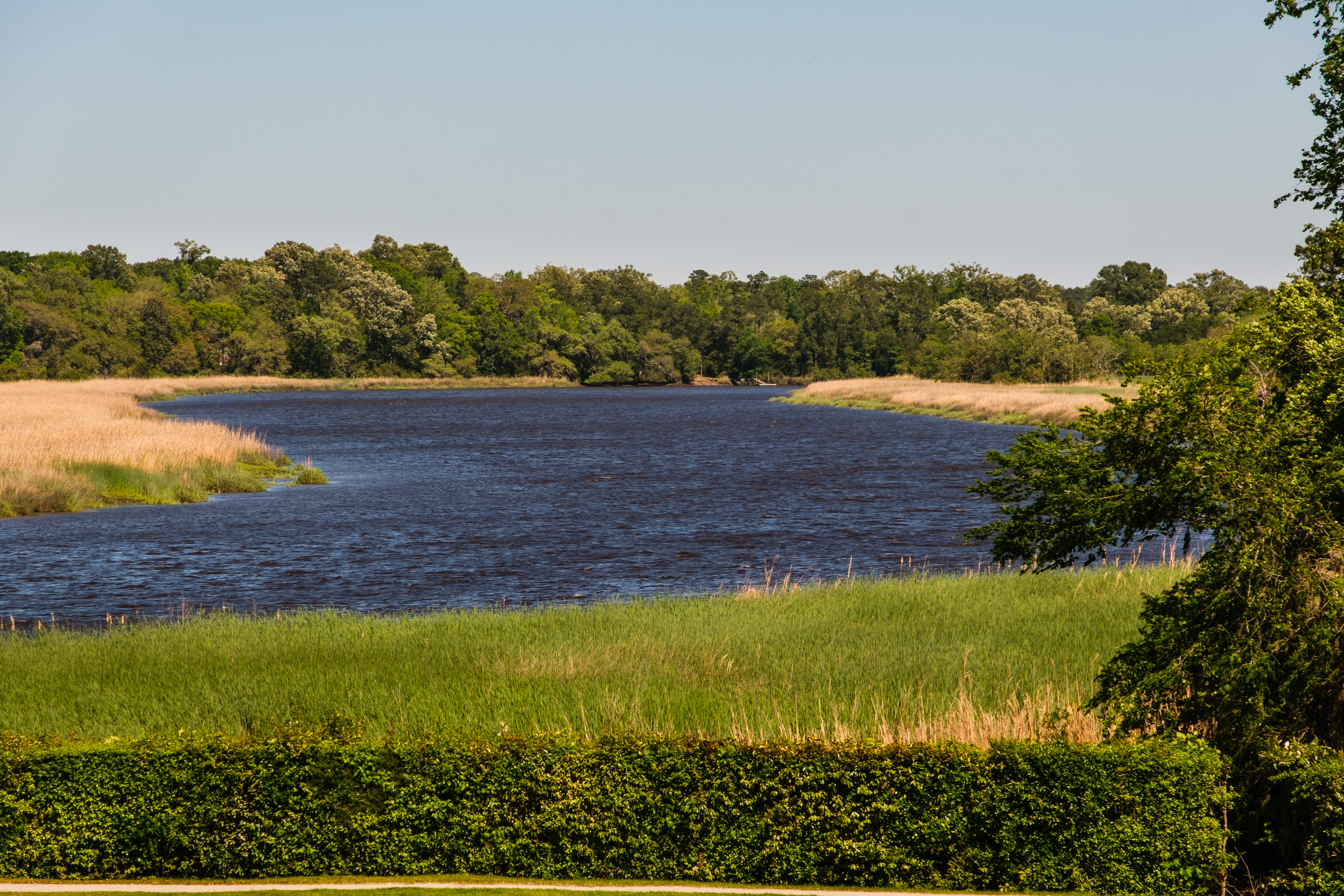
The Ashley River from Middleton Place plantation in Dorchester County, northwest of Charleston, South Carolina
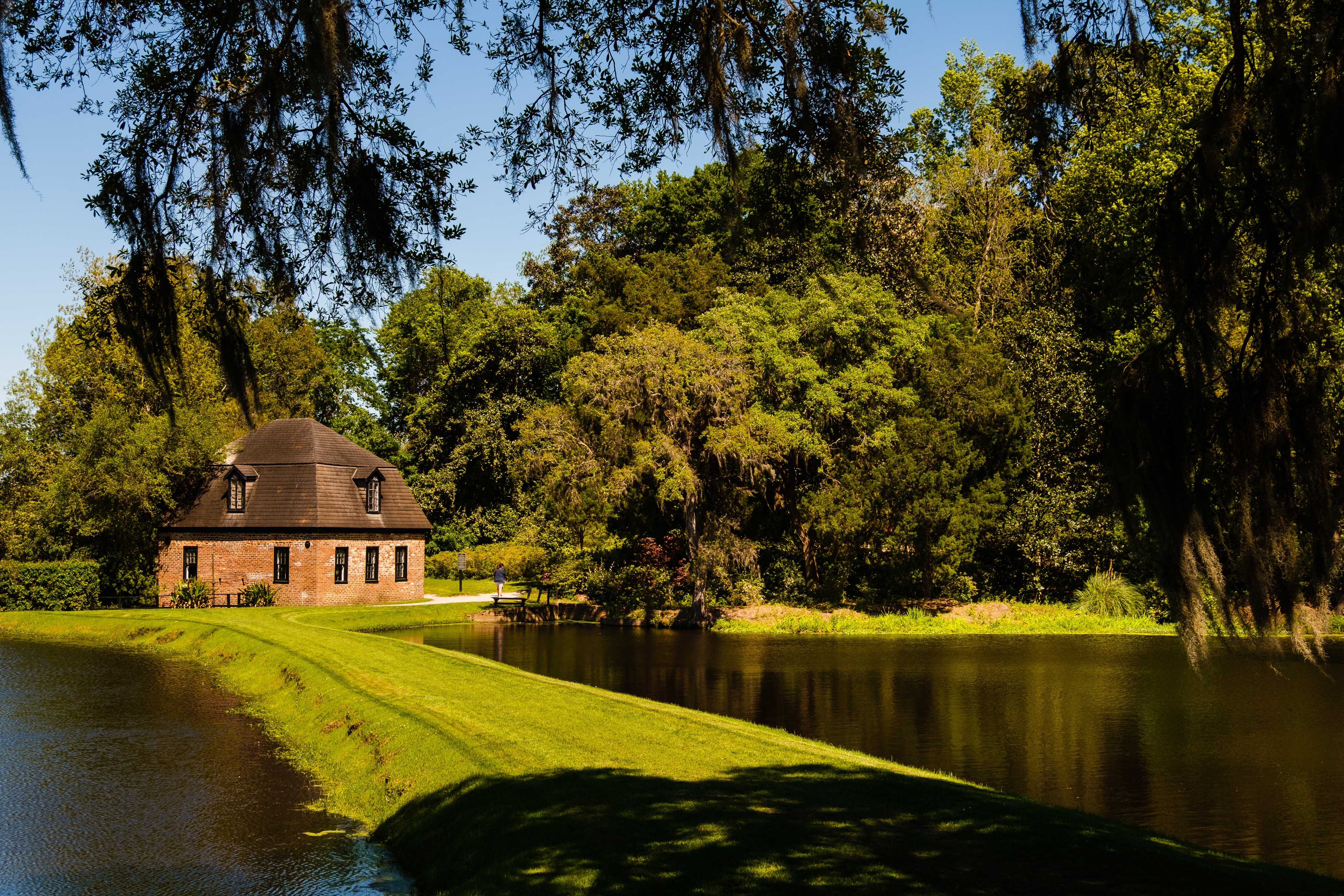
The Rice House. Middleton Place plantation in Dorchester County, northwest of Charleston, South Carolina
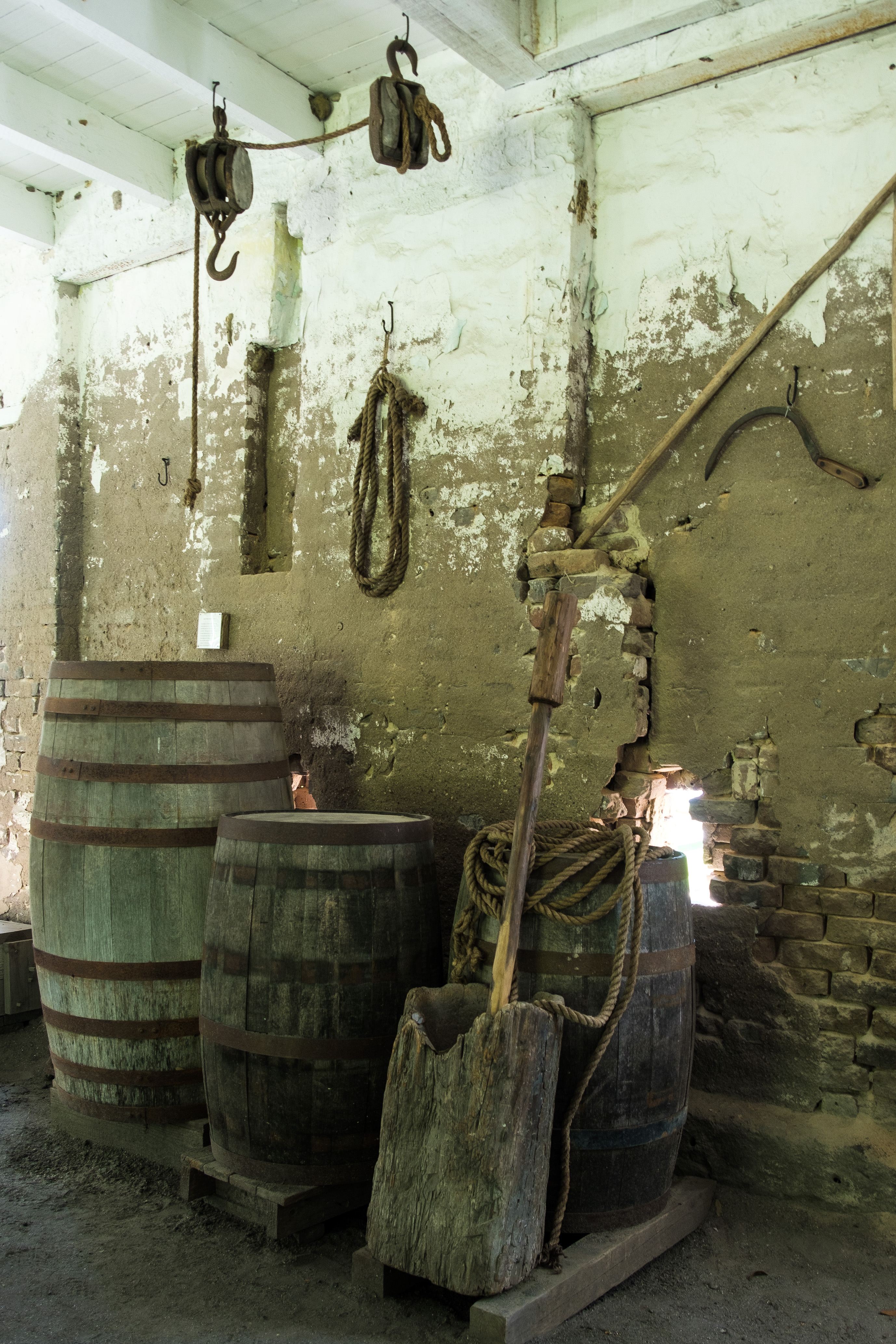
Inside the rice mill. Middleton Place plantation in Dorchester County, northwest of Charleston, South Carolina

Another view of the Rice House. Middleton Place plantation in Dorchester County, northwest of Charleston, South Carolina
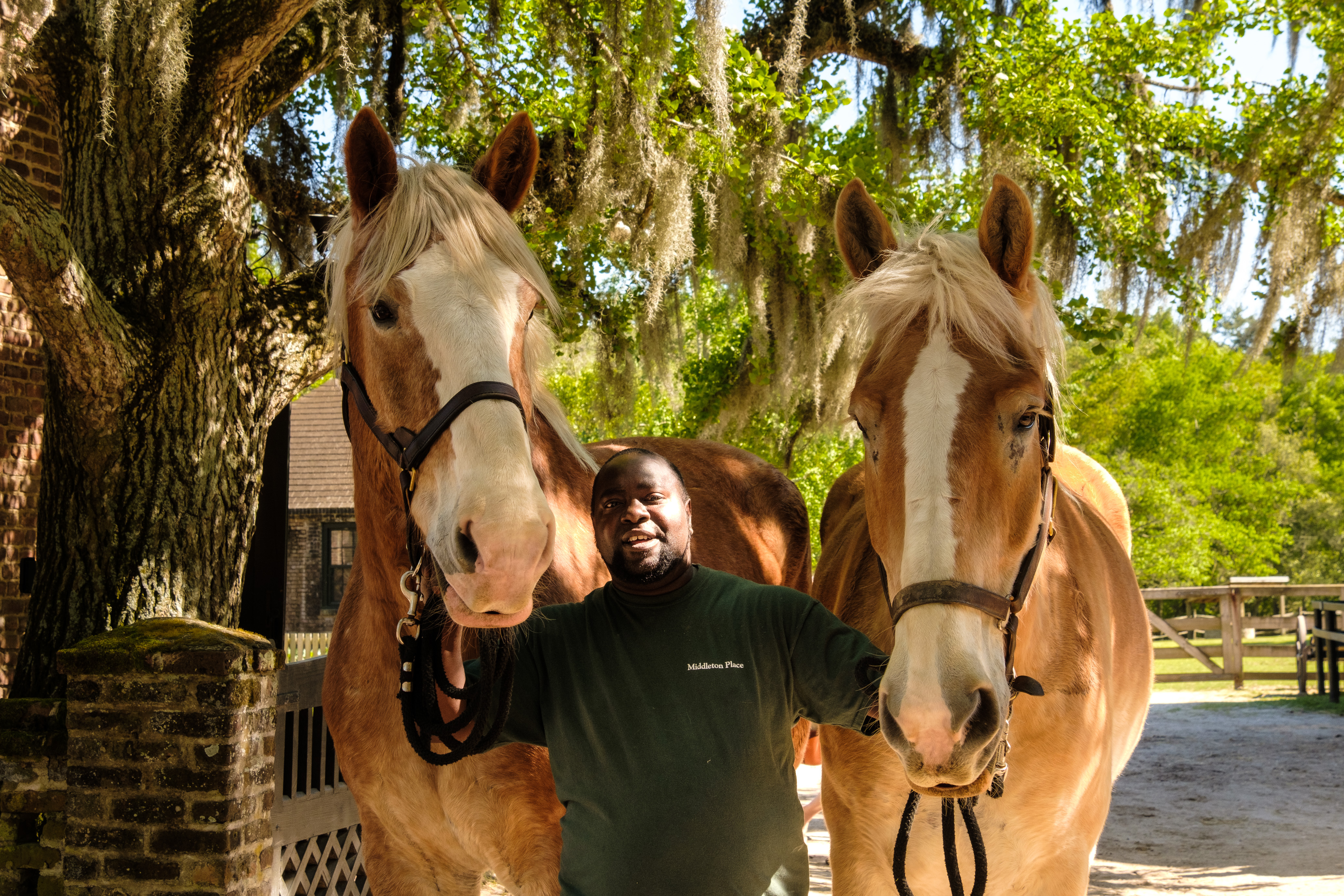
The Stableyards, Middleton Place plantation in Dorchester County, northwest of Charleston, South Carolina

The Stableyards, Middleton Place plantation in Dorchester County, northwest of Charleston, South Carolina
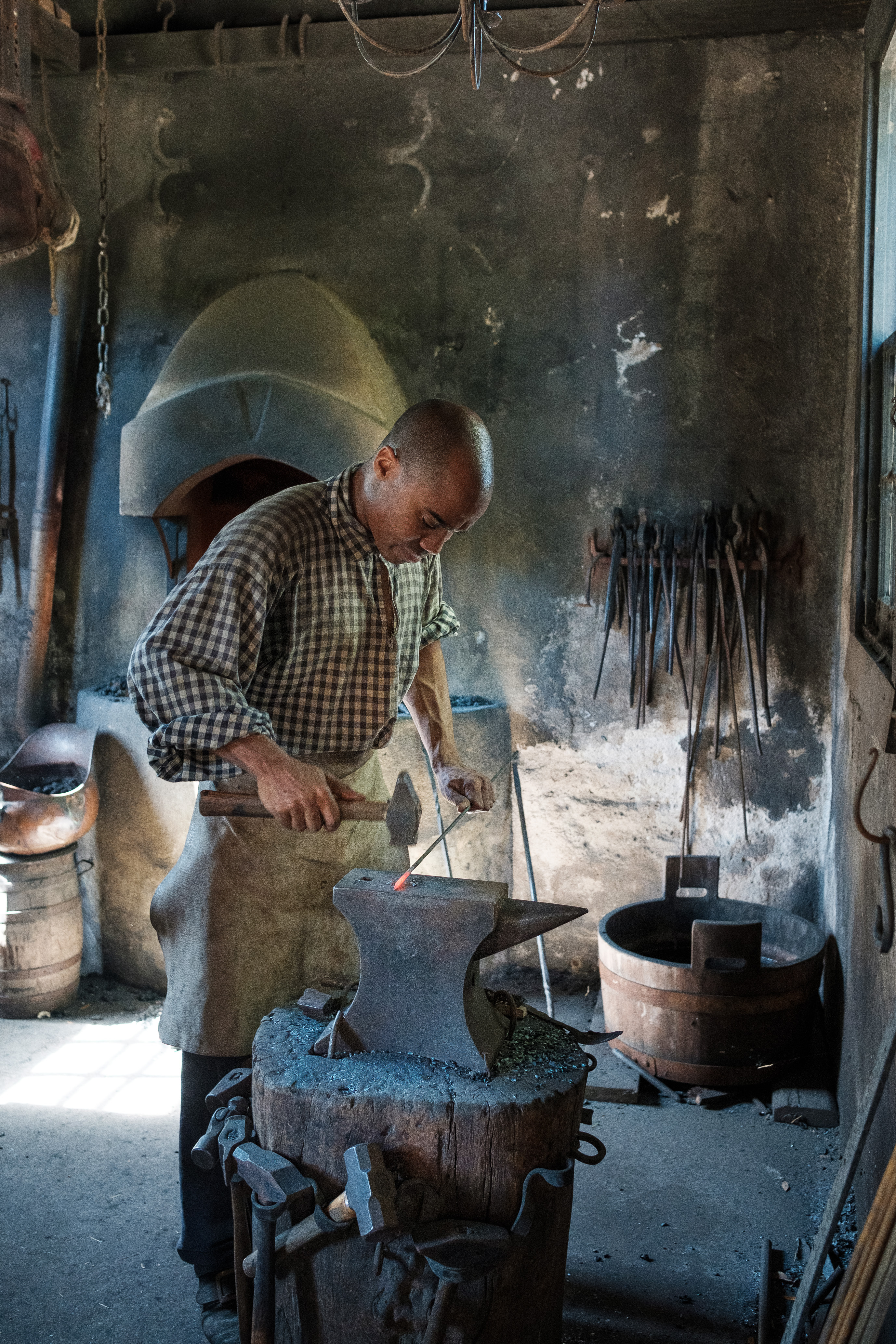
The Stableyards, Middleton Place plantation in Dorchester County, northwest of Charleston, South Carolina
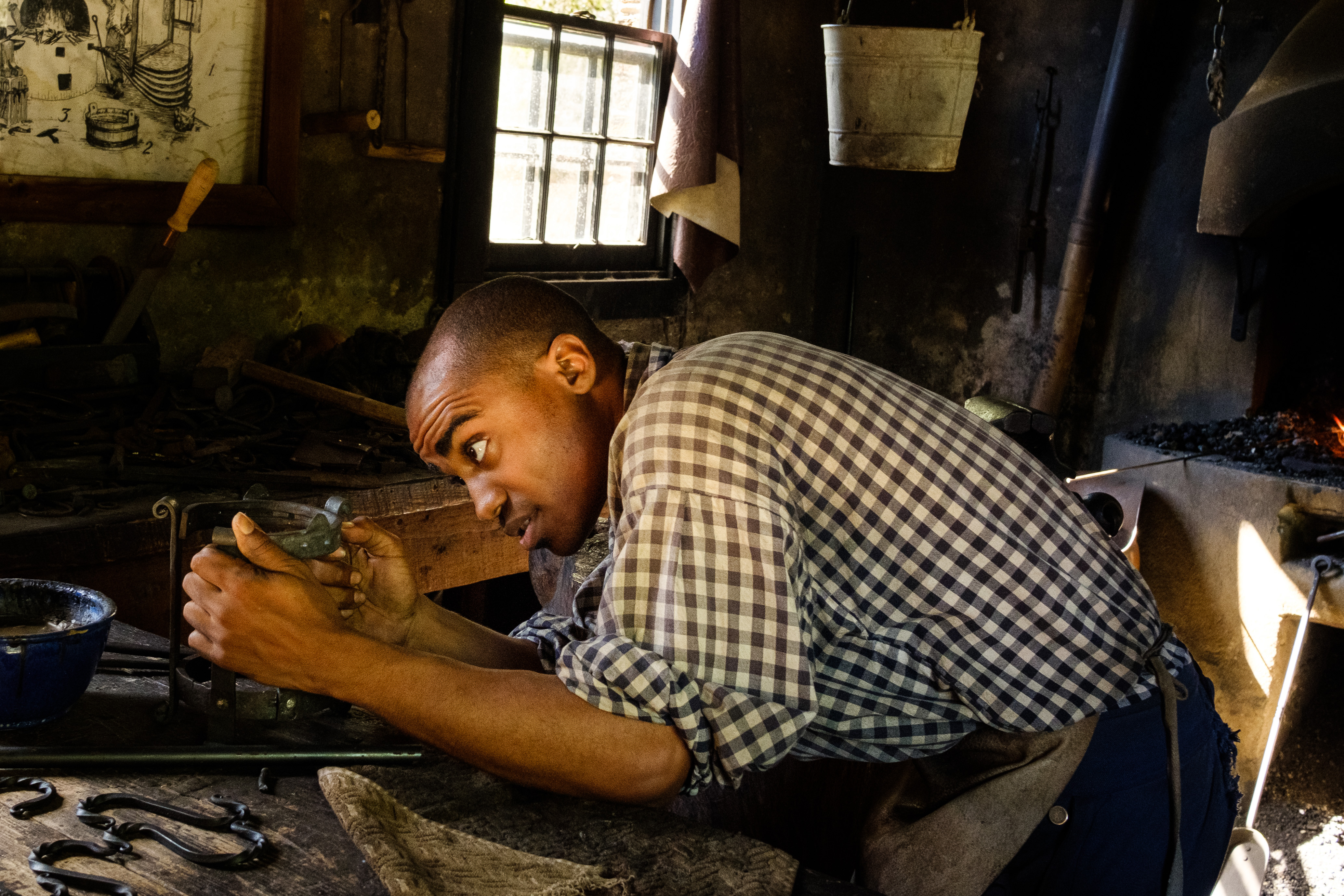
The Stableyards, Middleton Place plantation in Dorchester County, northwest of Charleston, South Carolina

"Leave 'em Rest". African American cemetery at Drayton Hall plantation in Dorchester County, northwest of Charleston, South Carolina

African American cemetery at Drayton Hall plantation in Dorchester County, northwest of Charleston, South Carolina

The Ashley River from Drayton Hall plantation in Dorchester County, northwest of Charleston, South Carolina

The Main House, Drayton Hall plantation in Dorchester County, northwest of Charleston, South Carolina

The Main House, Drayton Hall plantation in Dorchester County, northwest of Charleston, South Carolina
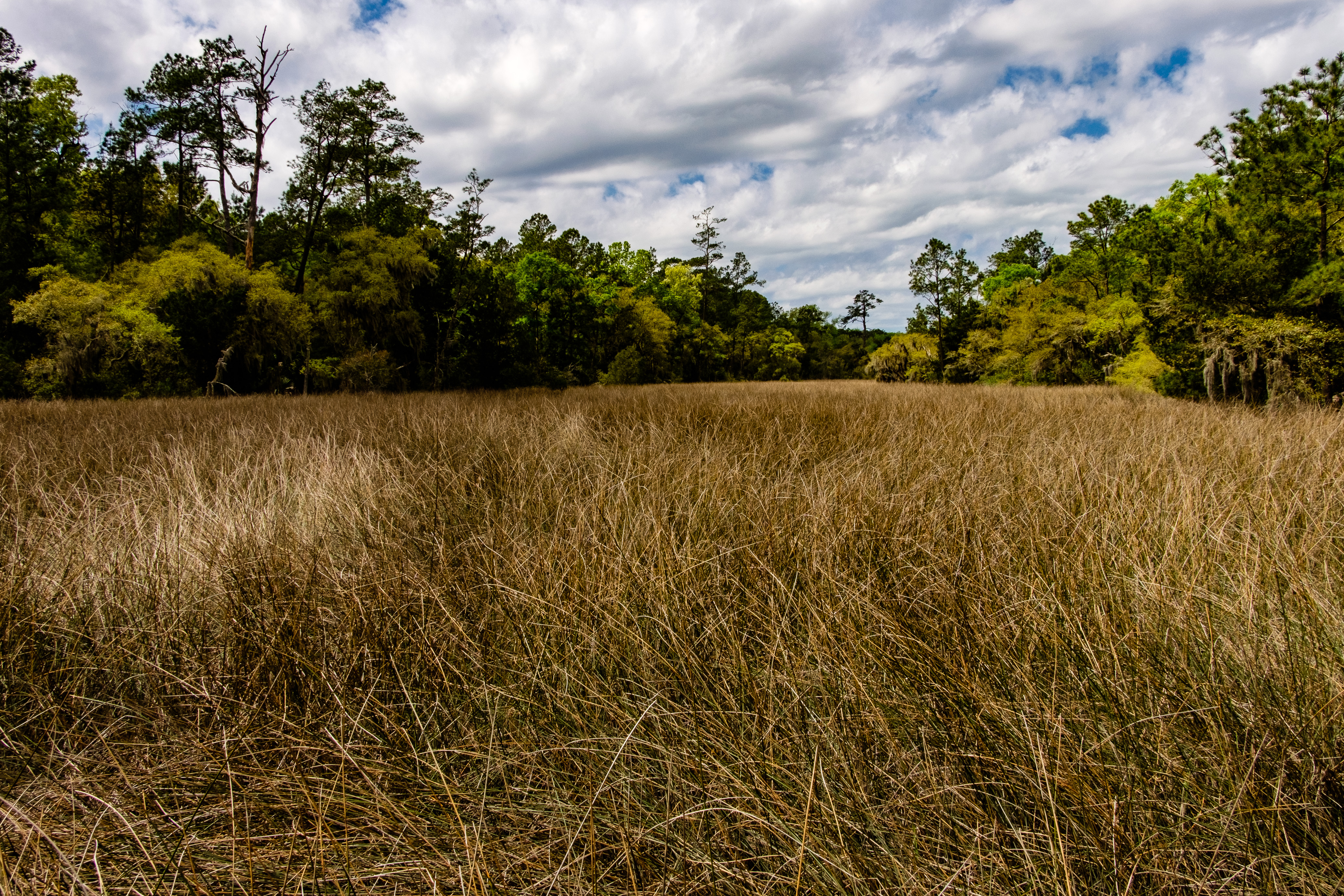
Former rice fields at Drayton Hall plantation in Dorchester County, northwest of Charleston, South Carolina

The Main House, Drayton Hall plantation in Dorchester County, northwest of Charleston, South Carolina

On the Ashley River Road. Entry road to Magnolia plantation in Dorchester County, northwest of Charleston, South Carolina
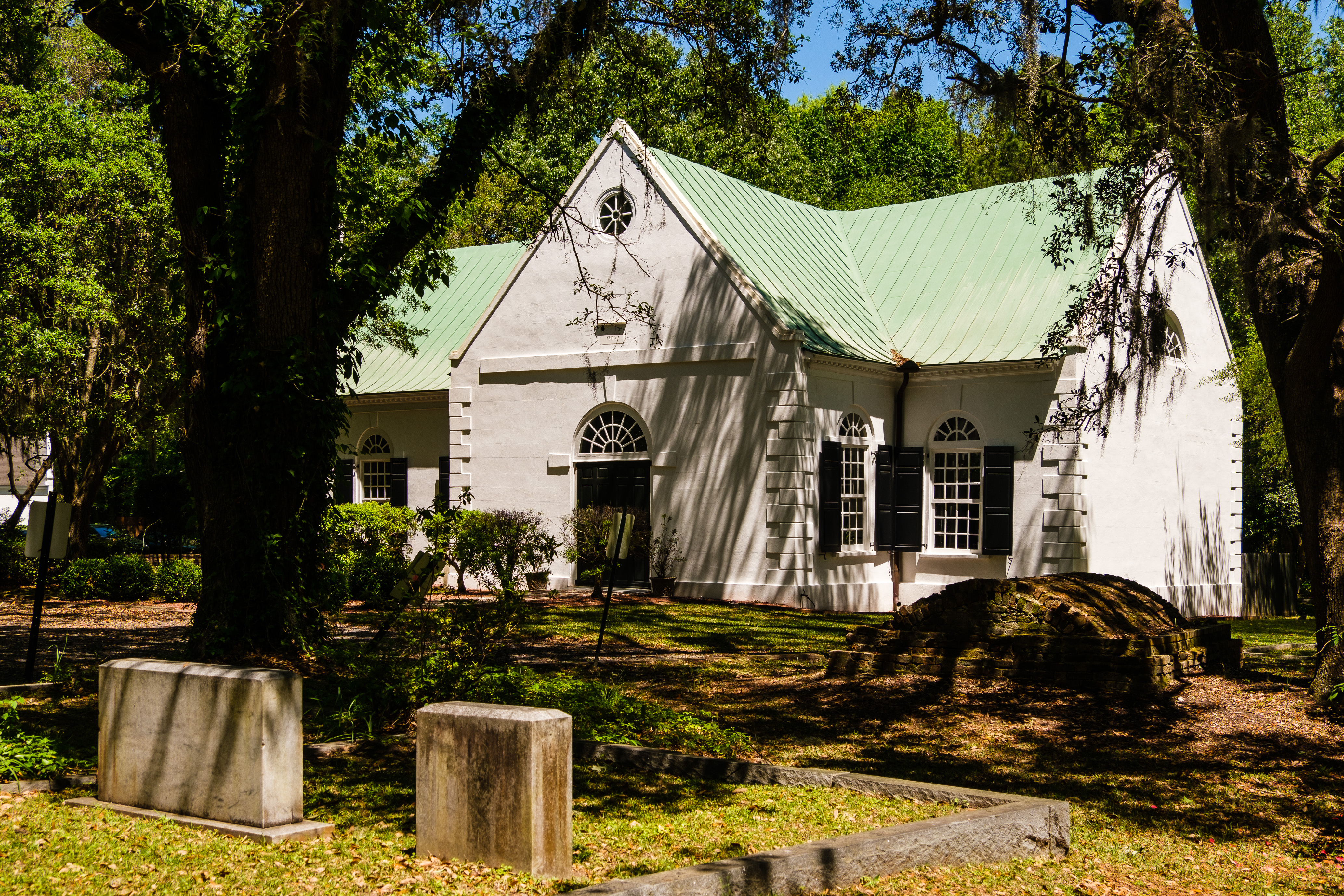
On the Ashley River Road. Old Saint Andrew’s Parish Church (1706), in Dorchester County, northwest of Charleston, South Carolina

On the Ashley River Road. Old Saint Andrew’s Parish Church (1706), in Dorchester County, northwest of Charleston, South Carolina
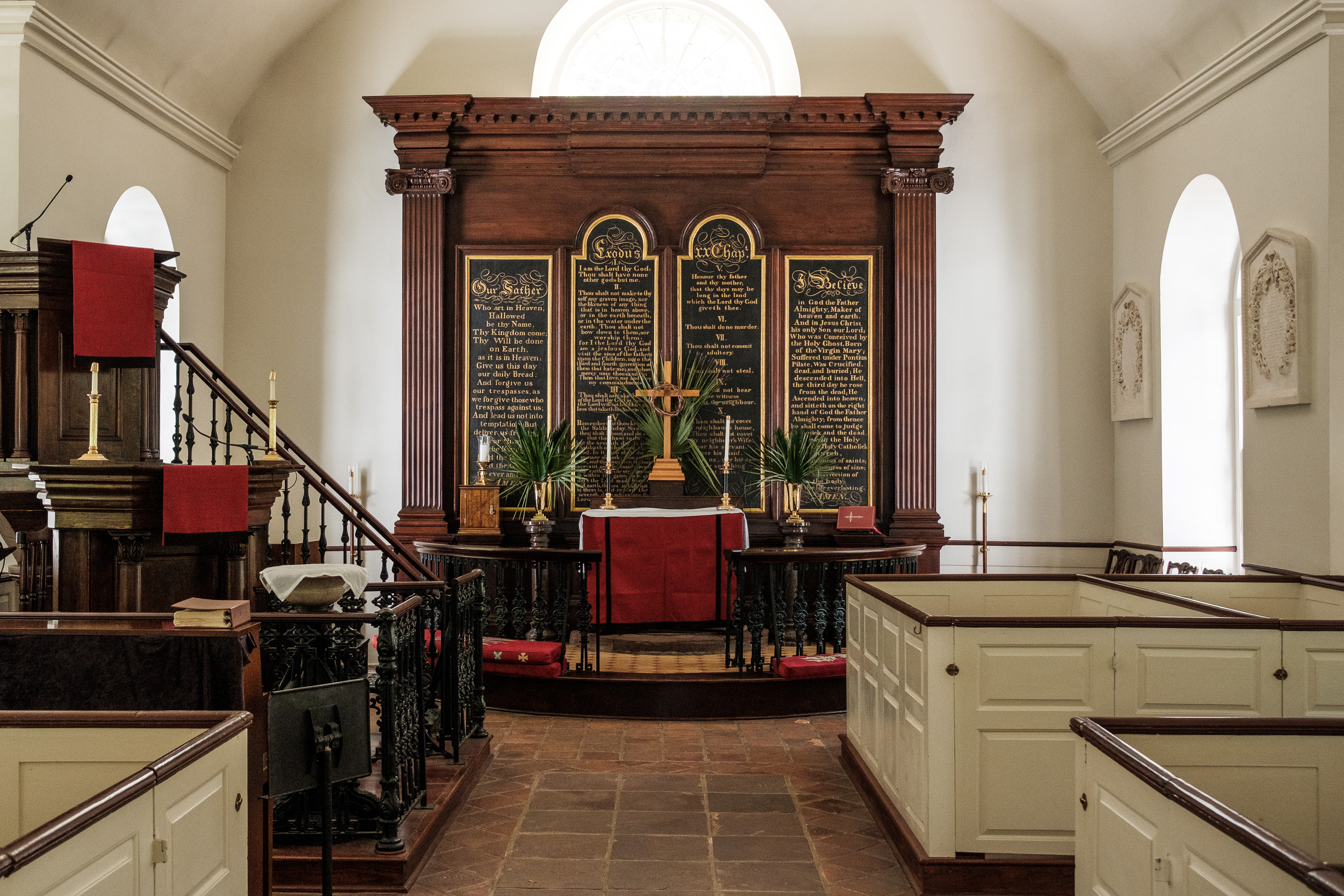
Old Saint Andrew’s Parish Church (1706), in Dorchester County, northwest of Charleston, South Carolina

On the Ashley River Road. St. George's Church ruins, Colonial Dorchester State Historic Site, Summerville, South Carolina

In the Lowcountry. Cypress Gardens (formerly part of the Dean Hall plantation), Moncks Corner, Berkeley County, South Carolina

In the Lowcountry. Cypress Gardens (formerly part of the Dean Hall plantation), Moncks Corner, Berkeley County, South Carolina
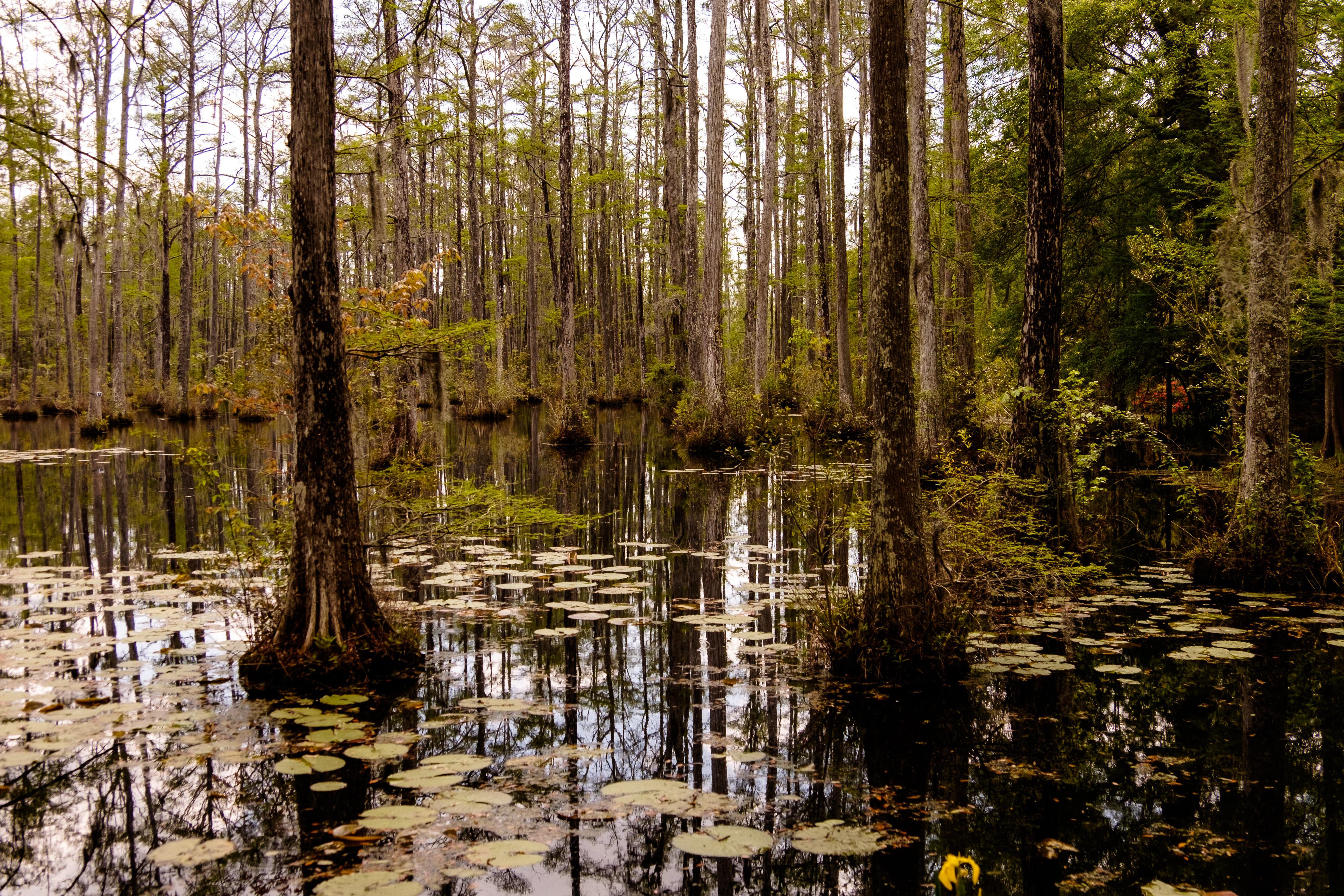
In the Lowcountry. Cypress Gardens (formerly part of the Dean Hall plantation), Moncks Corner, Berkeley County, South Carolina
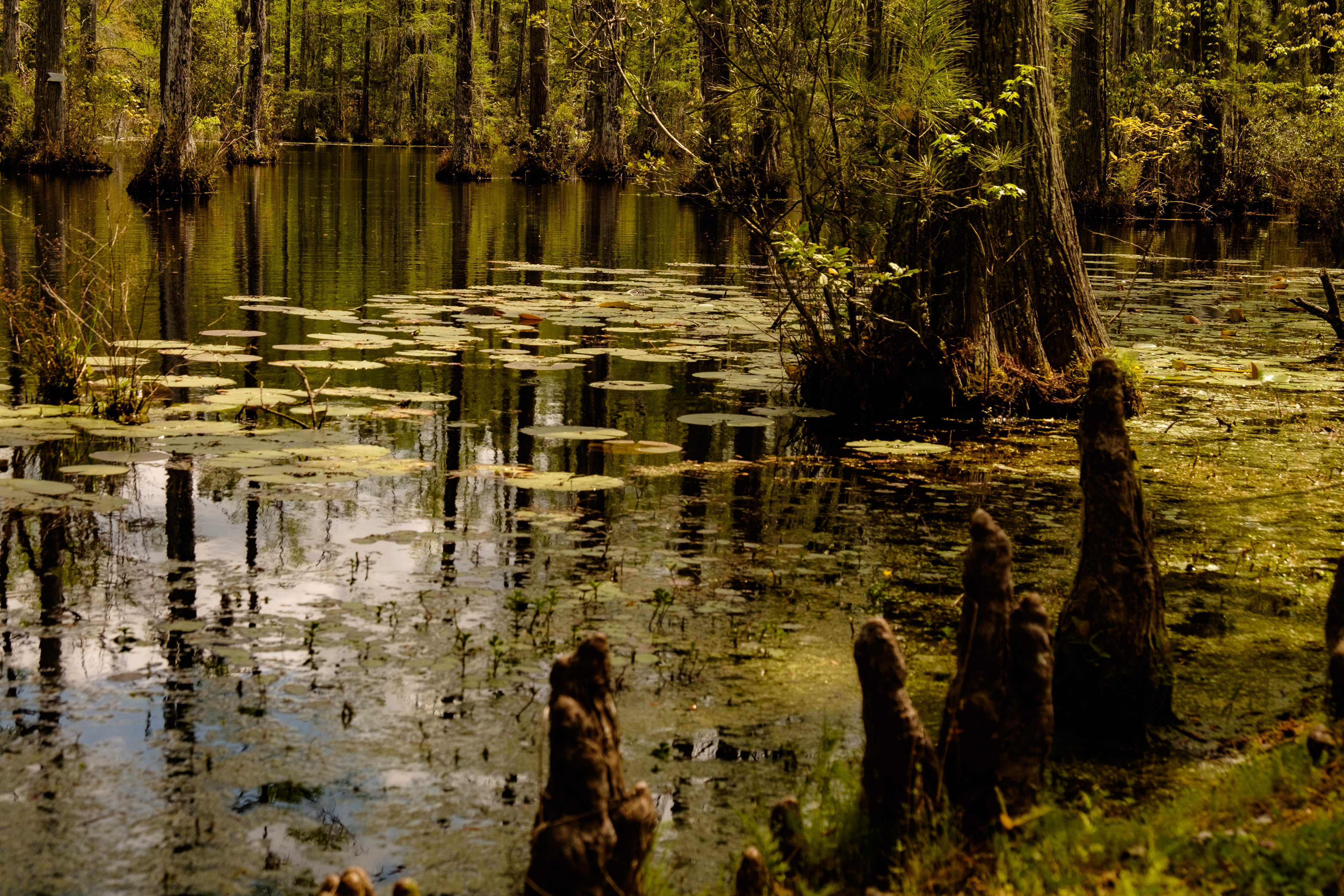
In the Lowcountry. Cypress Gardens (formerly part of the Dean Hall plantation), Moncks Corner, Berkeley County, South Carolina
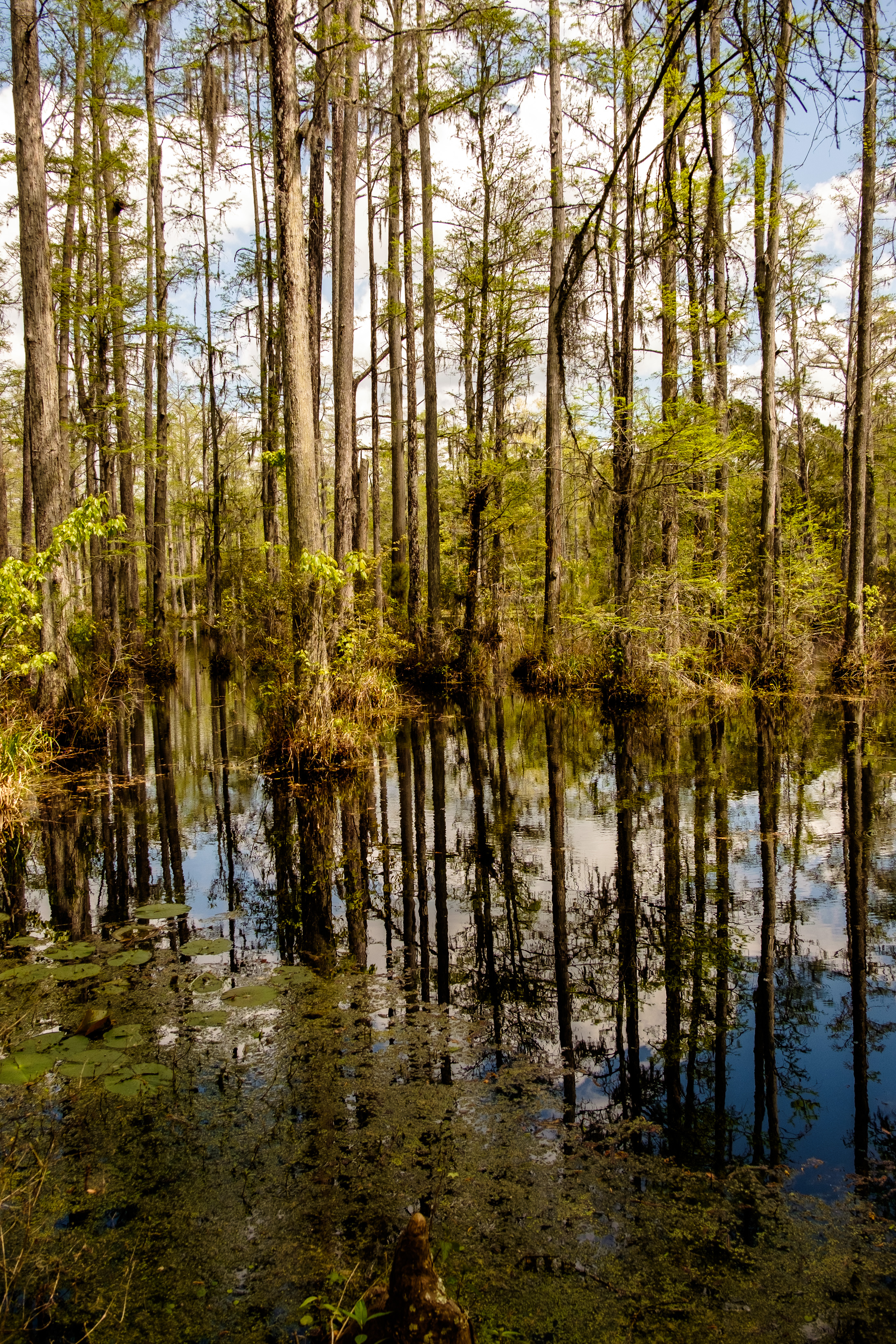
In the Lowcountry. Cypress Gardens (formerly part of the Dean Hall plantation), Moncks Corner, Berkeley County, South Carolina
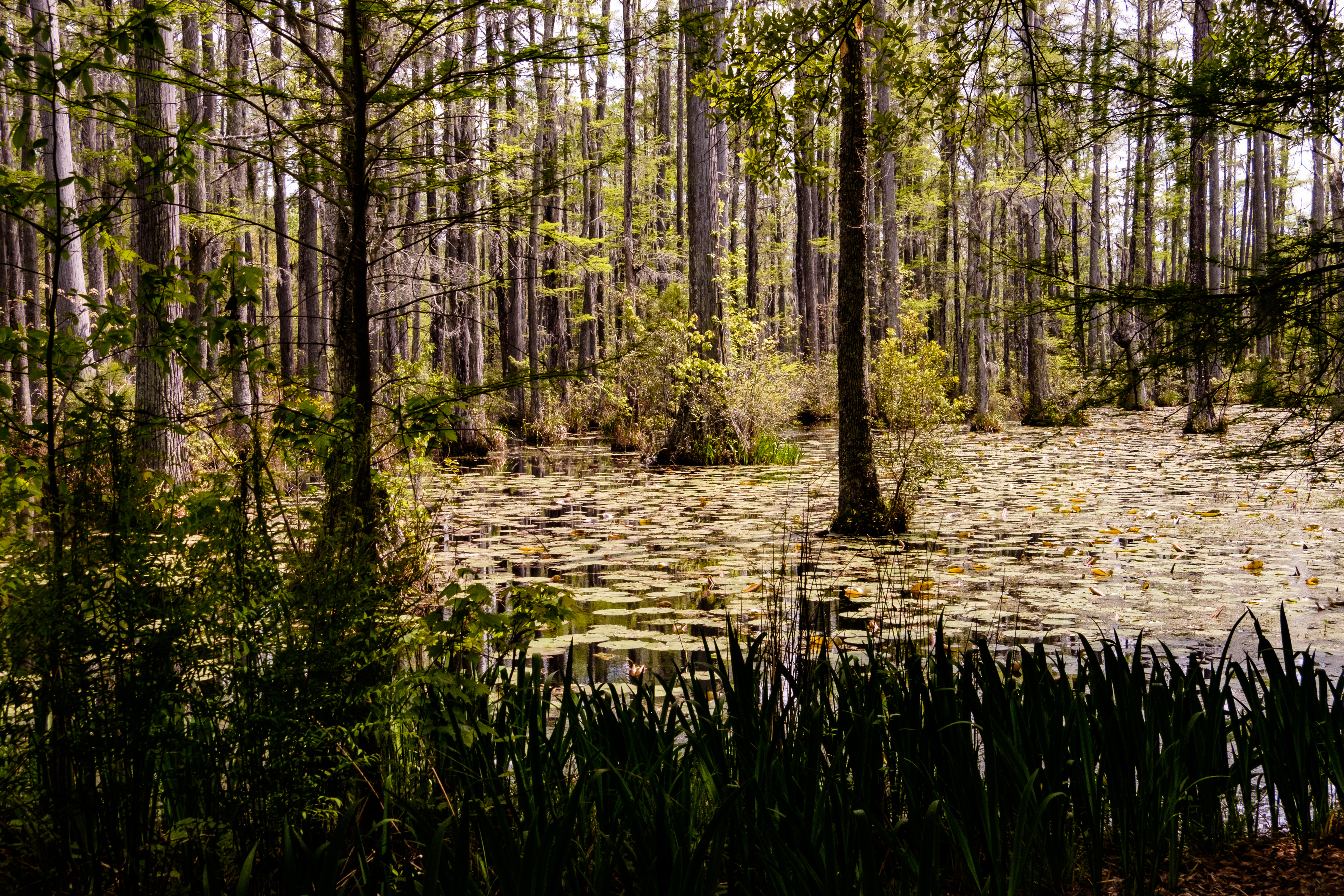
In the Lowcountry. Cypress Gardens (formerly part of the Dean Hall plantation), Moncks Corner, Berkeley County, South Carolina

In the Lowcountry. Cypress Gardens (formerly part of the Dean Hall plantation), Moncks Corner, Berkeley County, South Carolina
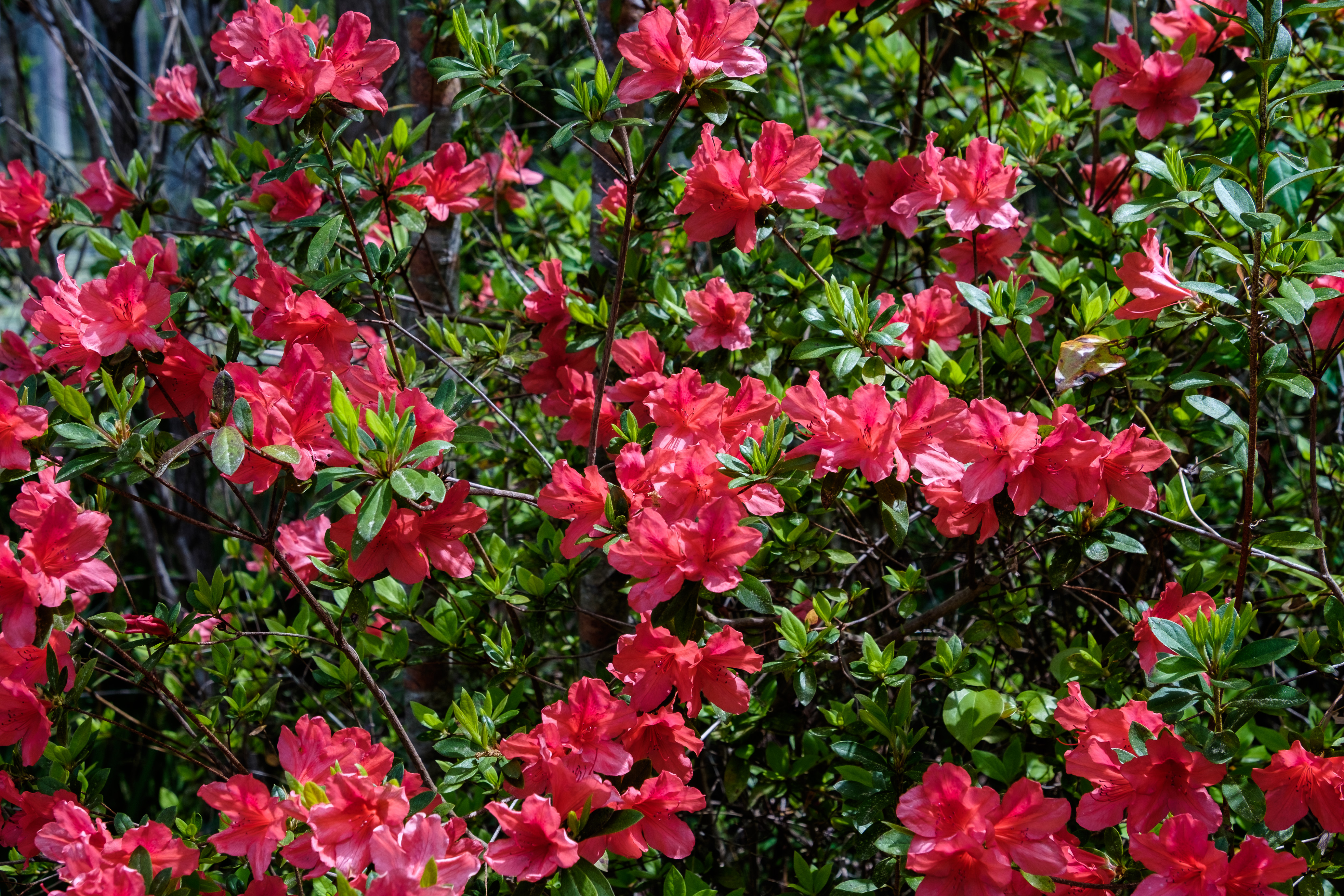
In the Lowcountry. Cypress Gardens (formerly part of the Dean Hall plantation), Moncks Corner, Berkeley County, South Carolina
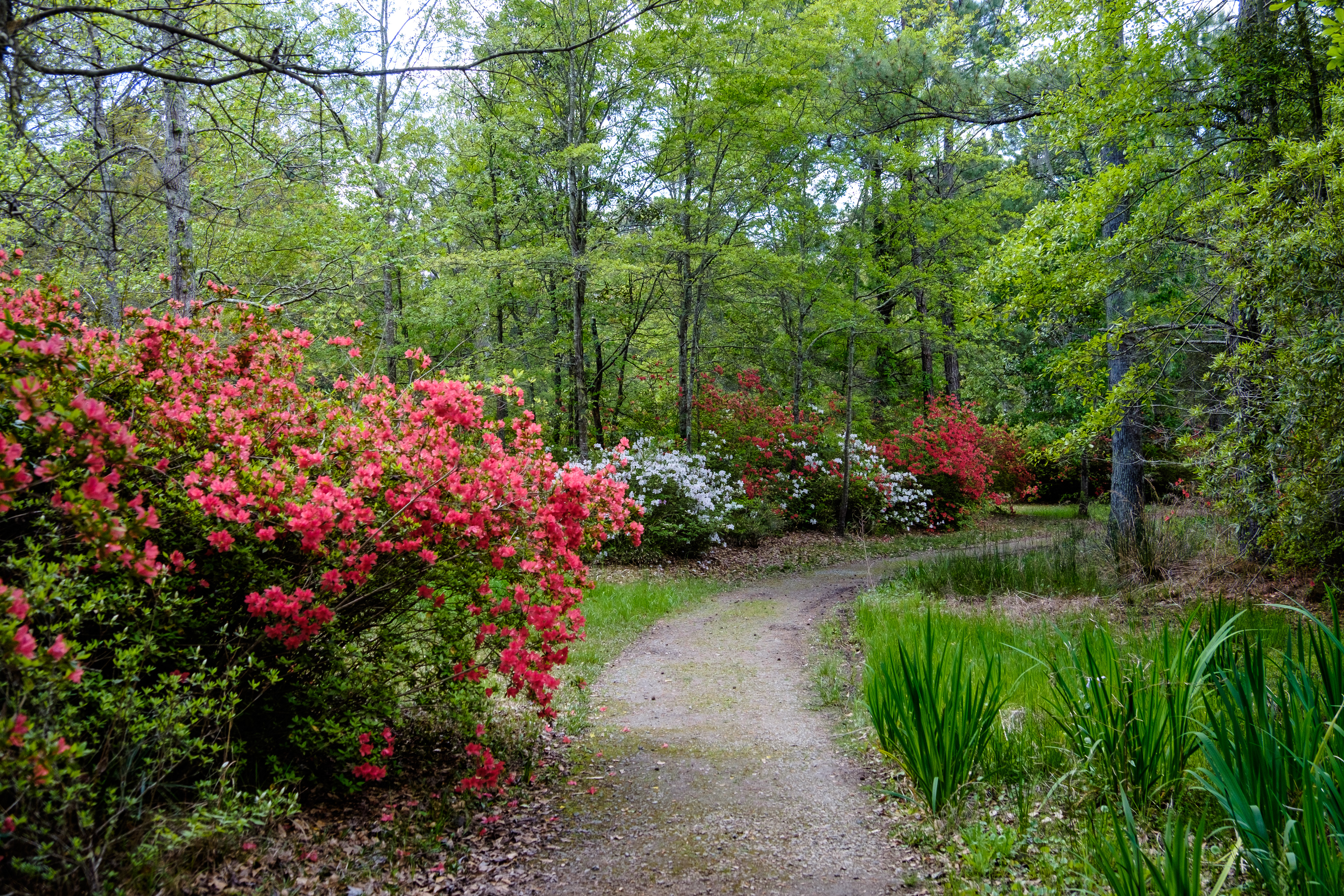
In the Lowcountry. Cypress Gardens (formerly part of the Dean Hall plantation), Moncks Corner, Berkeley County, South Carolina

In the Lowcountry. Cypress Gardens (formerly part of the Dean Hall plantation), Moncks Corner, Berkeley County, South Carolina

In the Lowcountry. Cypress Gardens (formerly part of the Dean Hall plantation), Moncks Corner, Berkeley County, South Carolina

In the Lowcountry. Cypress Gardens (formerly part of the Dean Hall plantation), Moncks Corner, Berkeley County, South Carolina

In the Lowcountry. Cypress Gardens (formerly part of the Dean Hall plantation), Moncks Corner, Berkeley County, South Carolina

